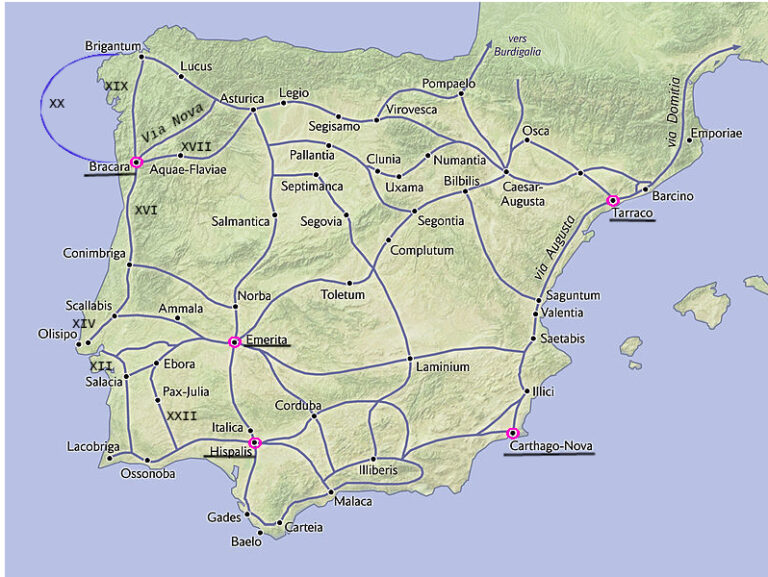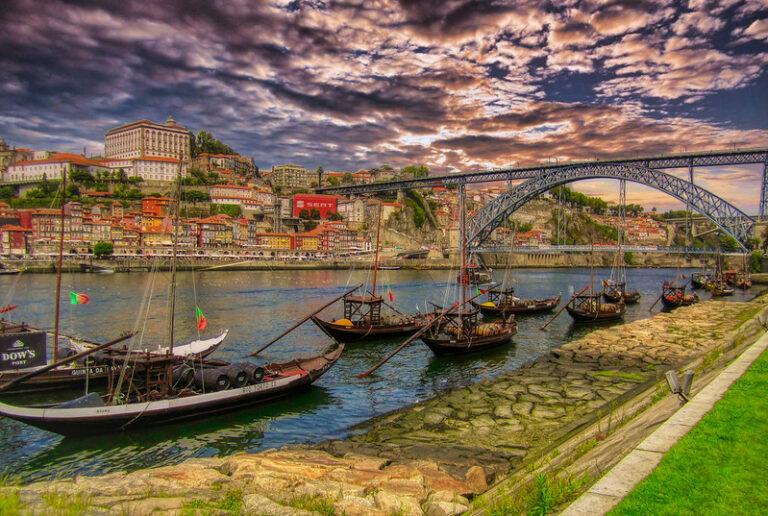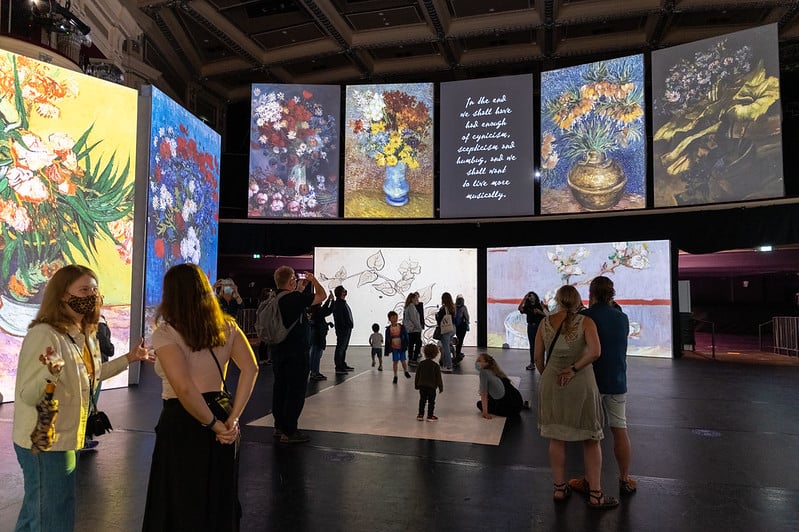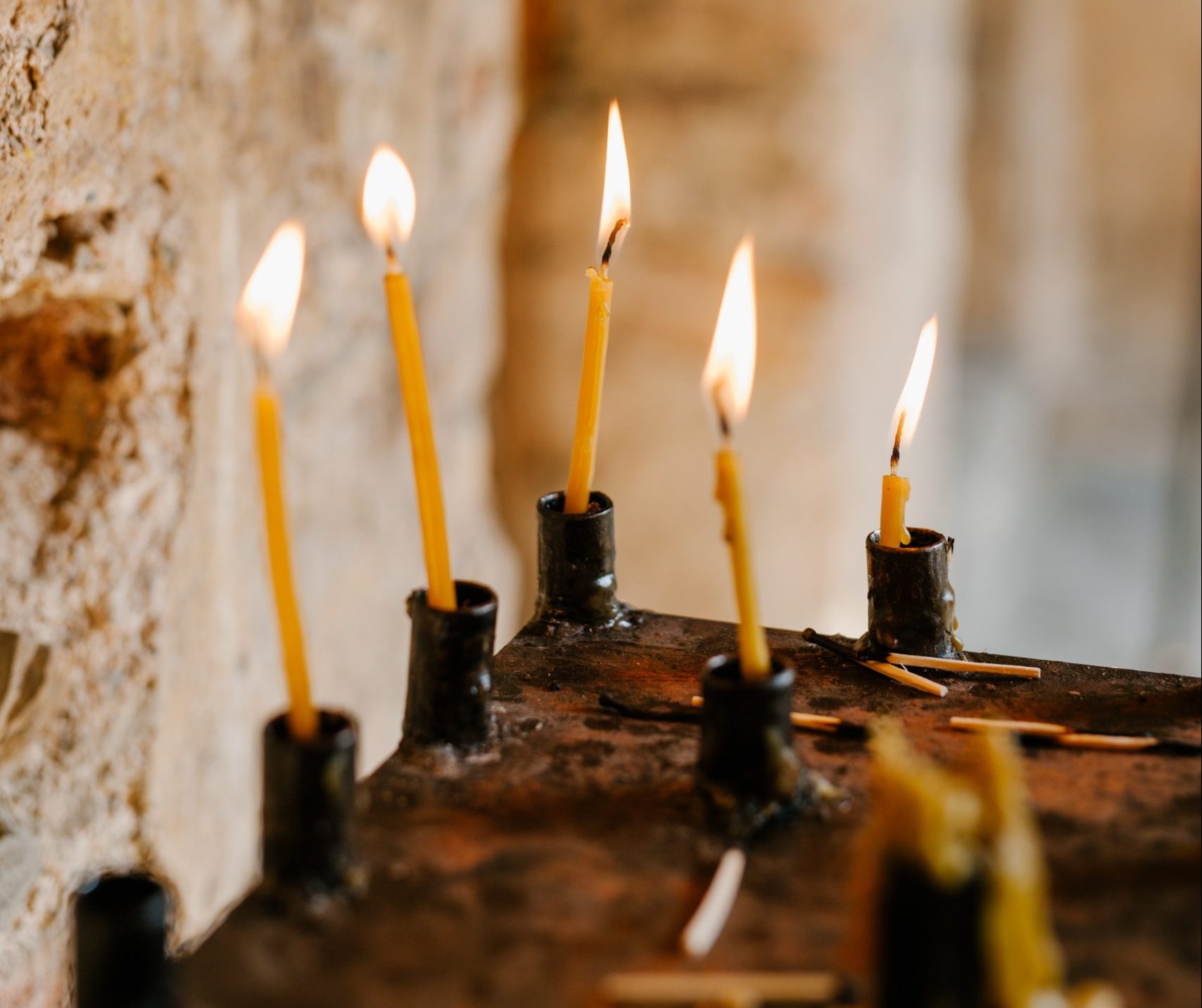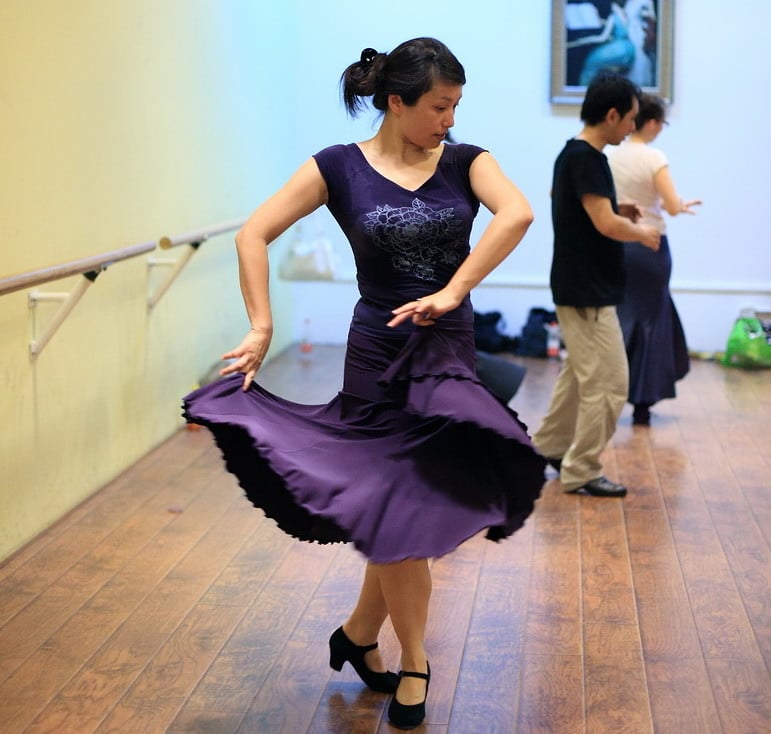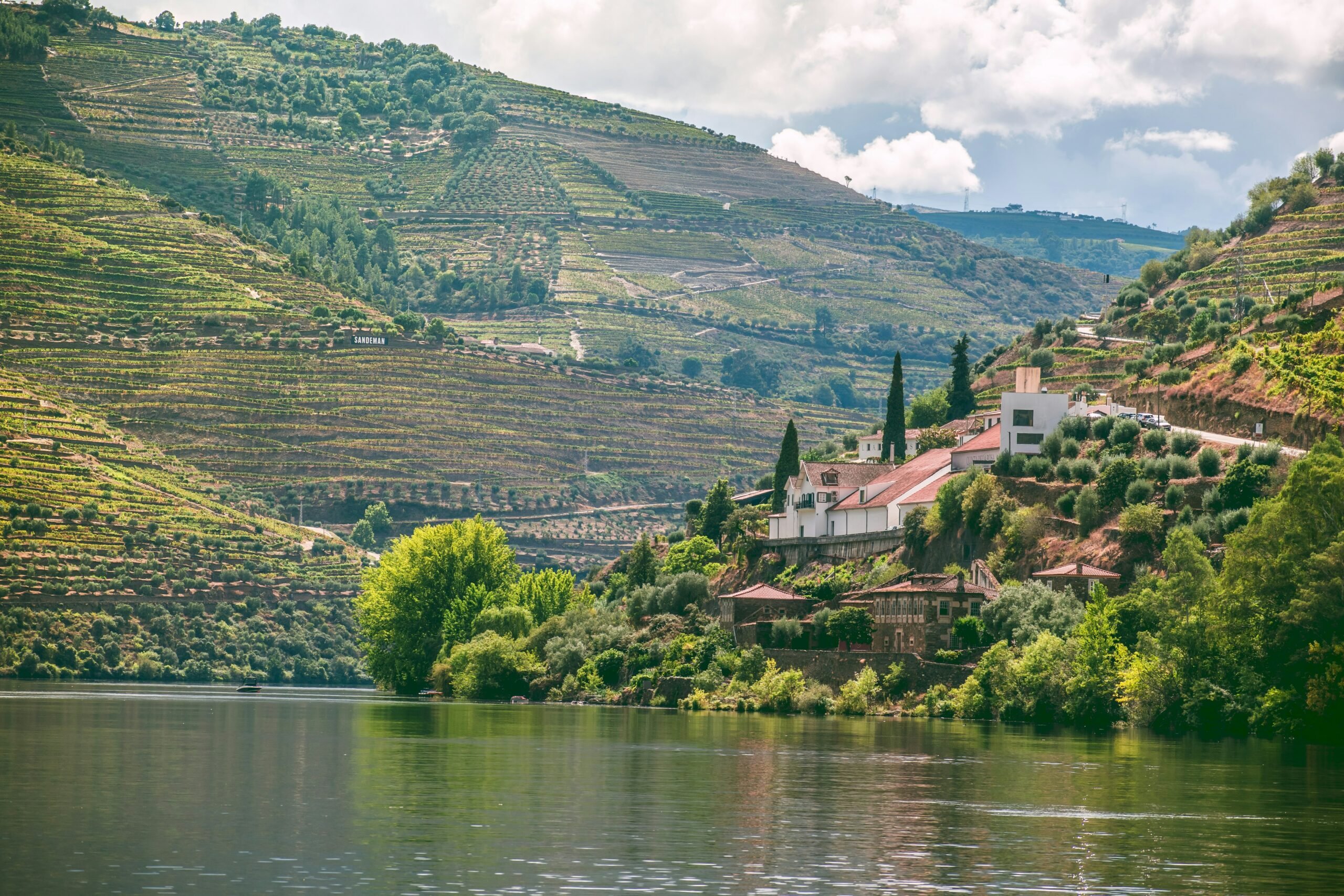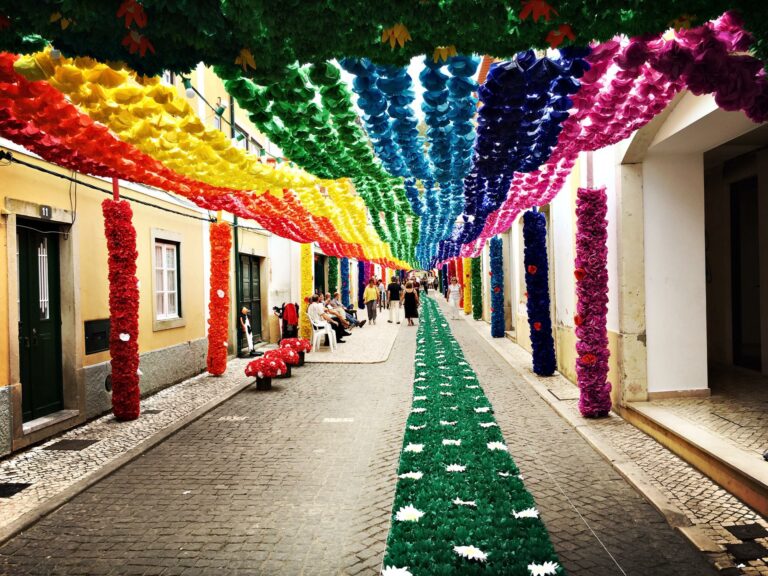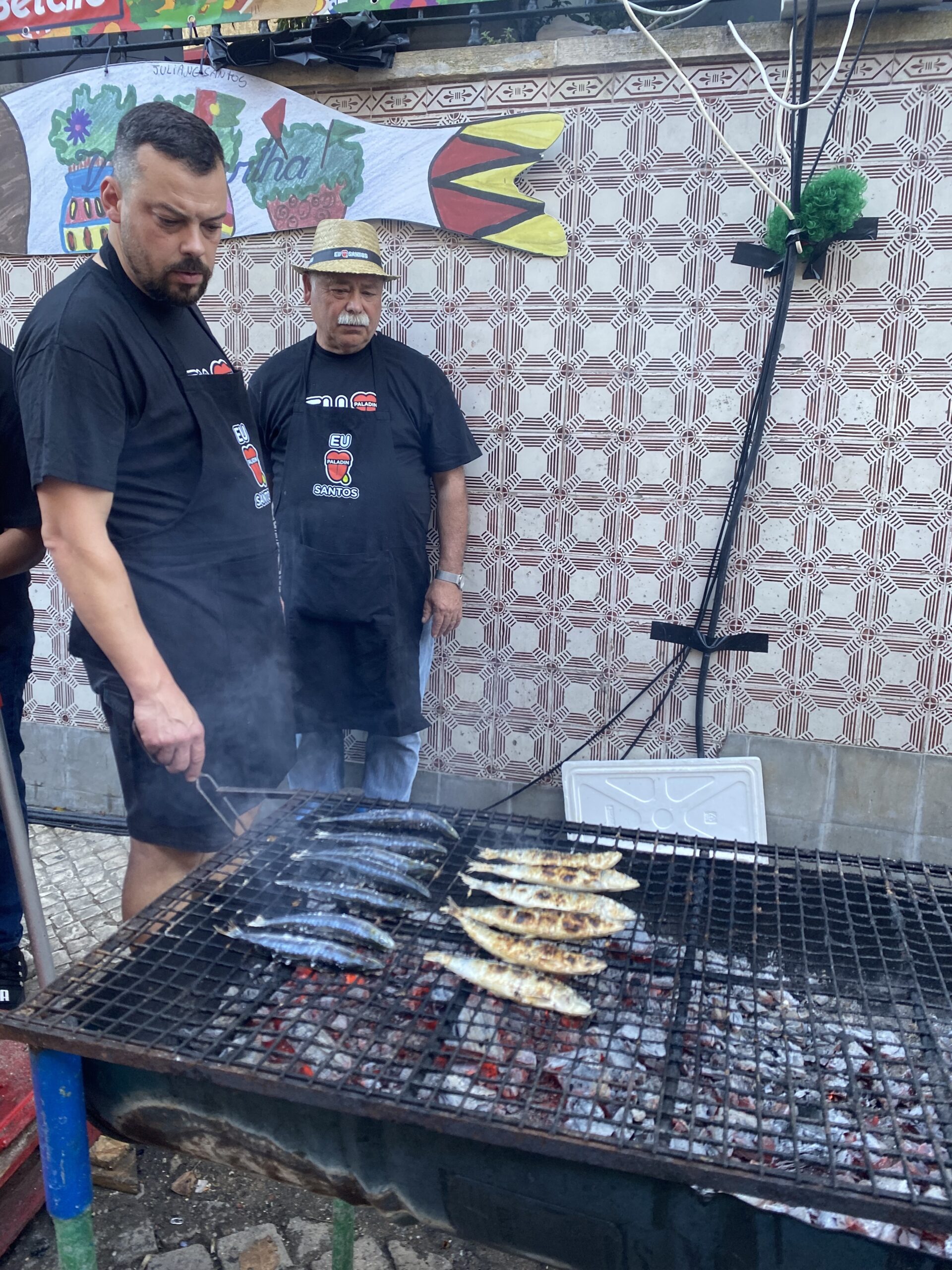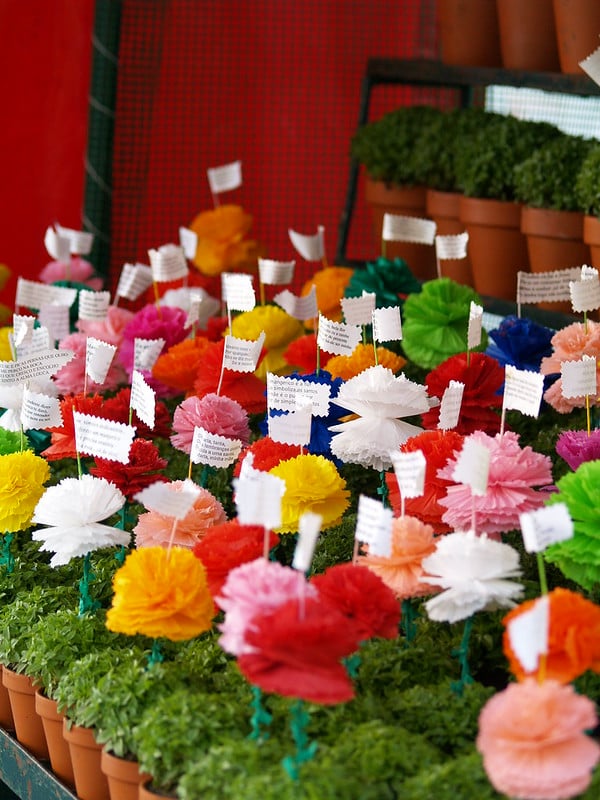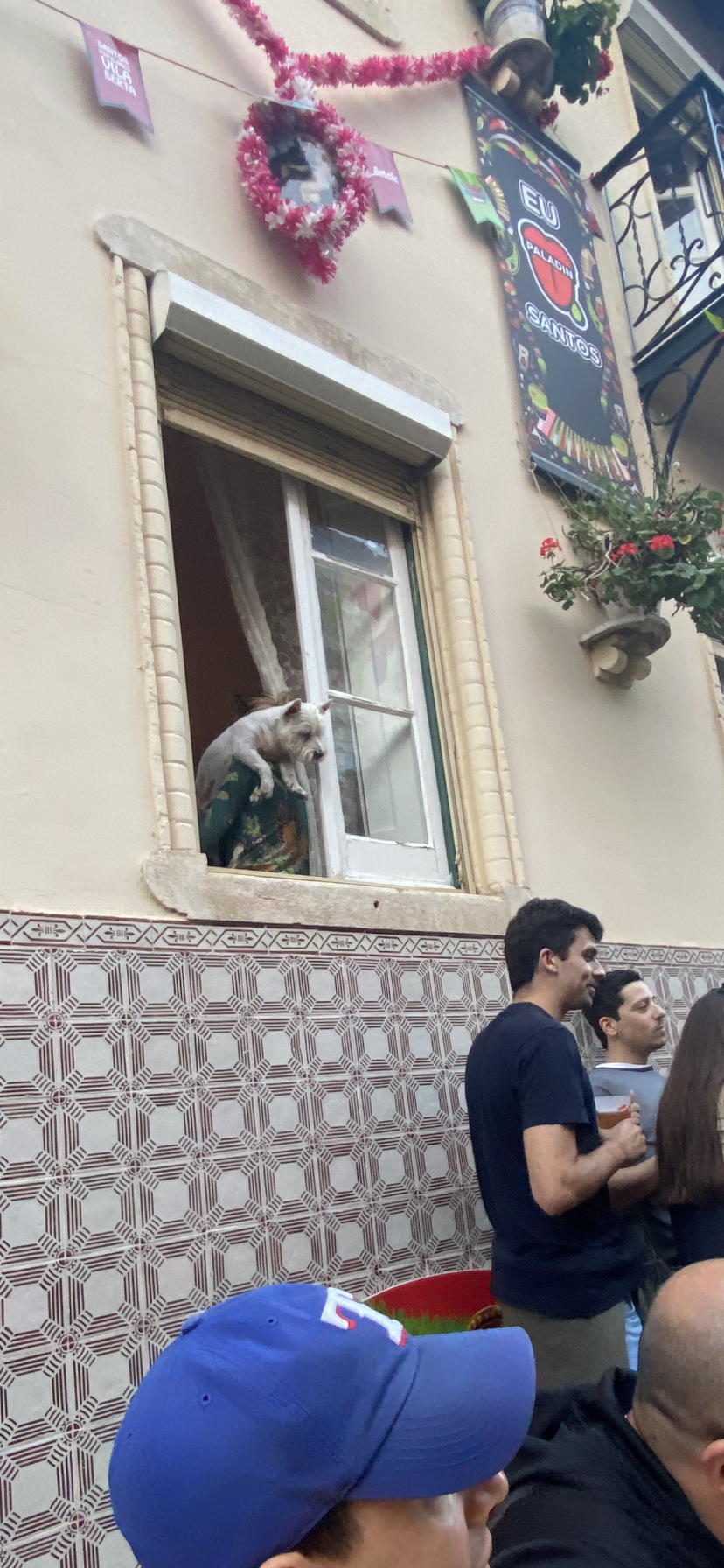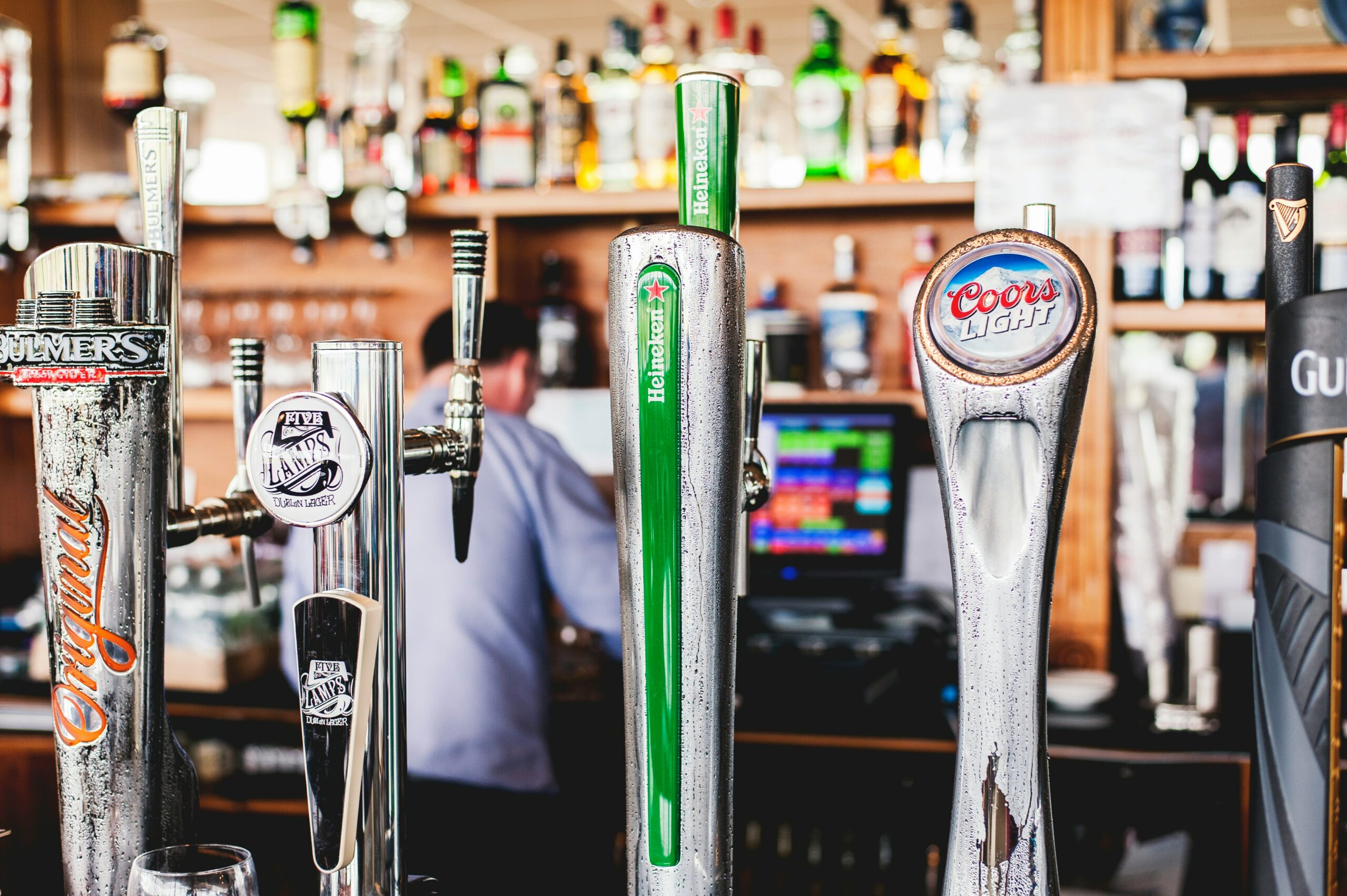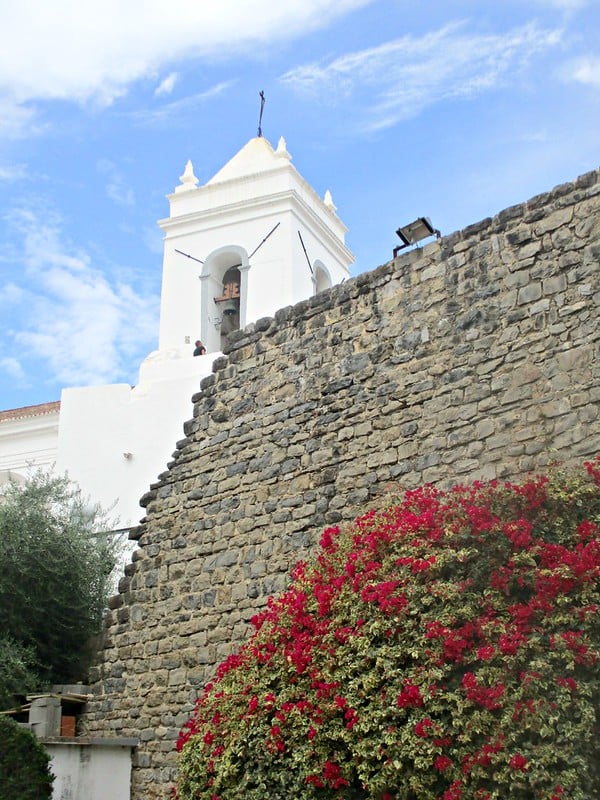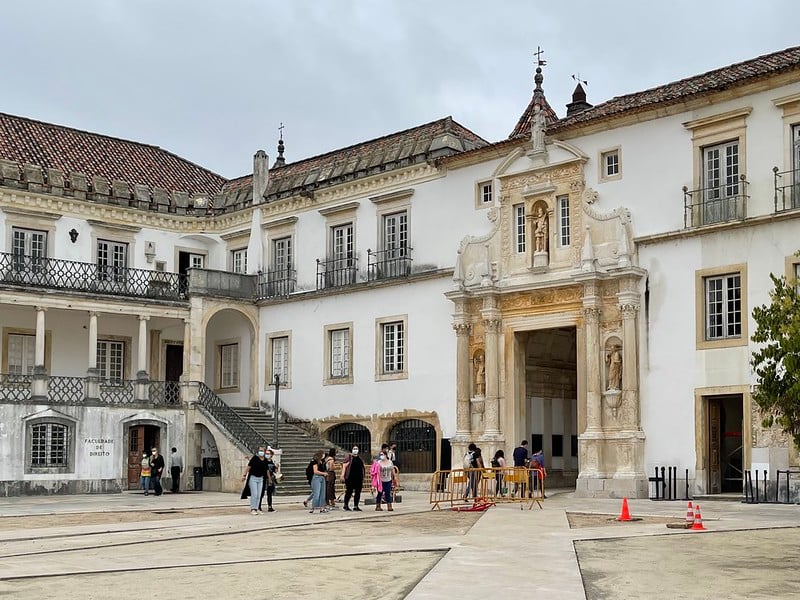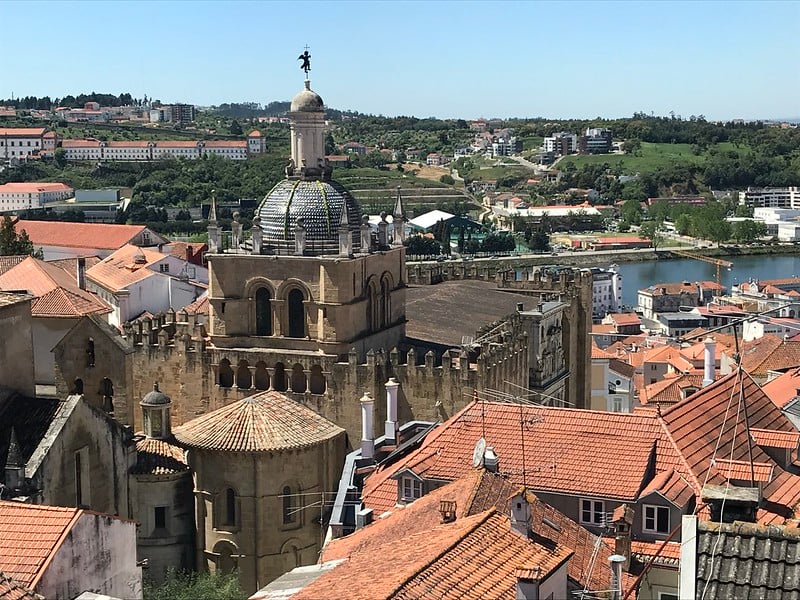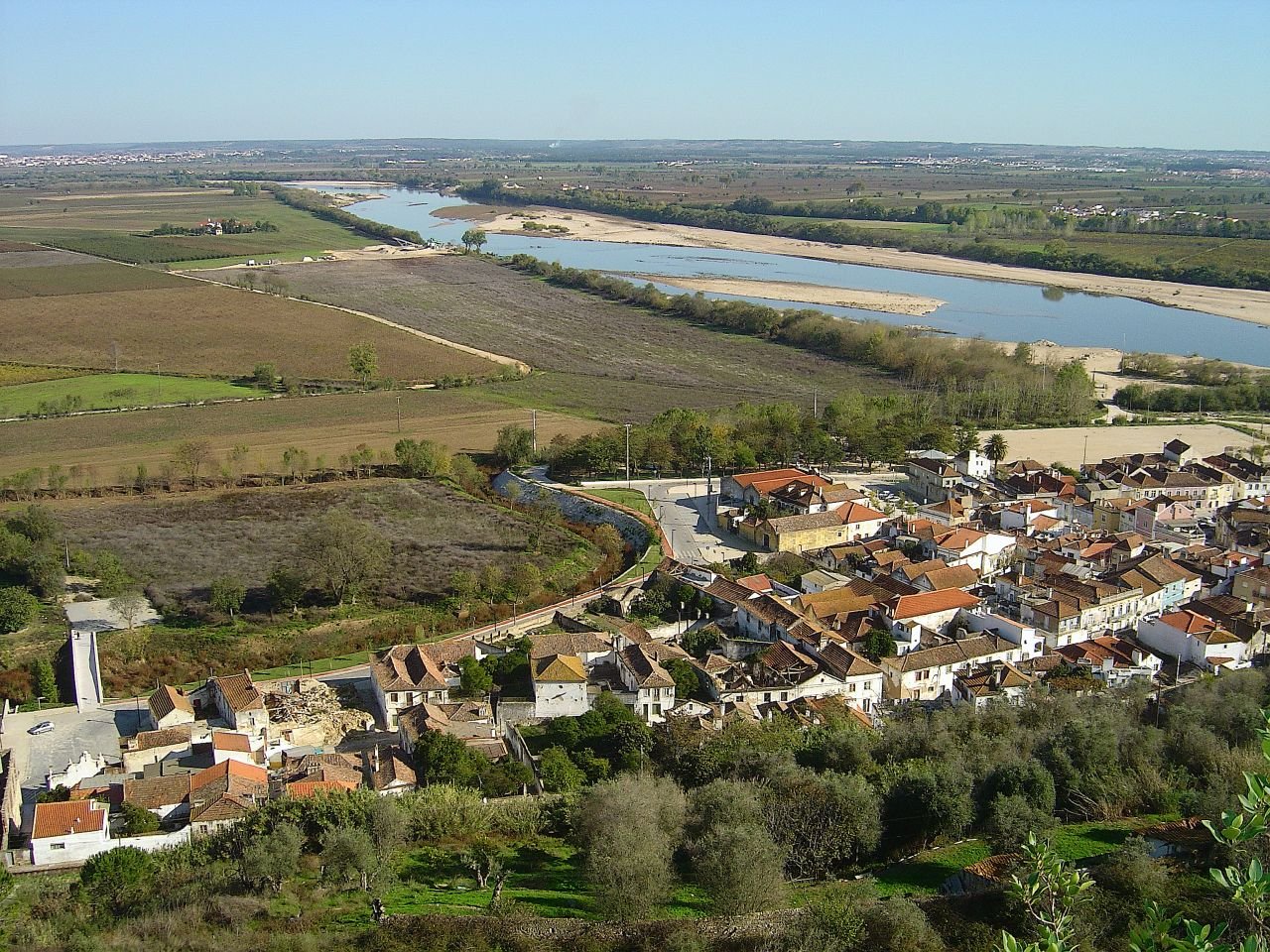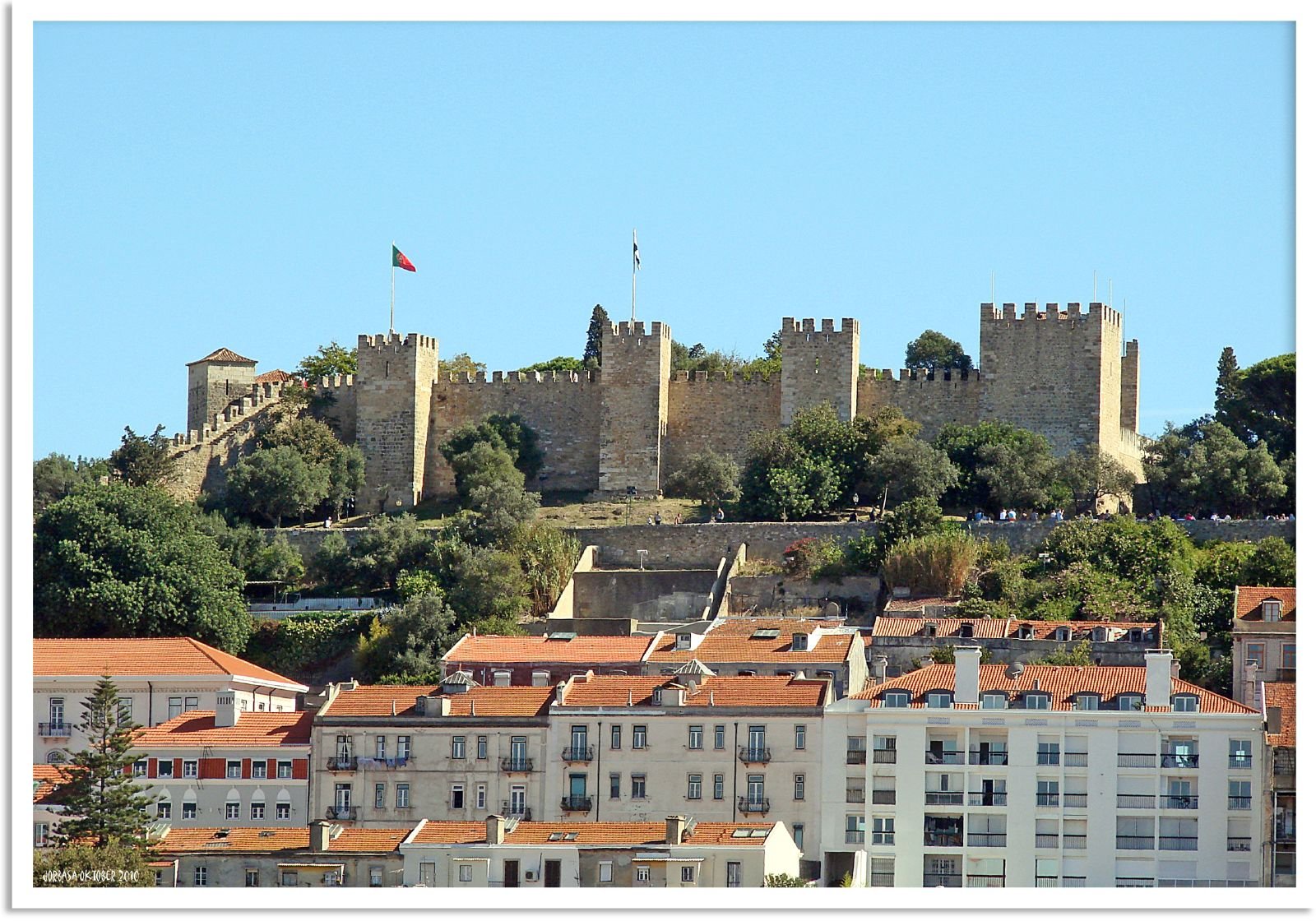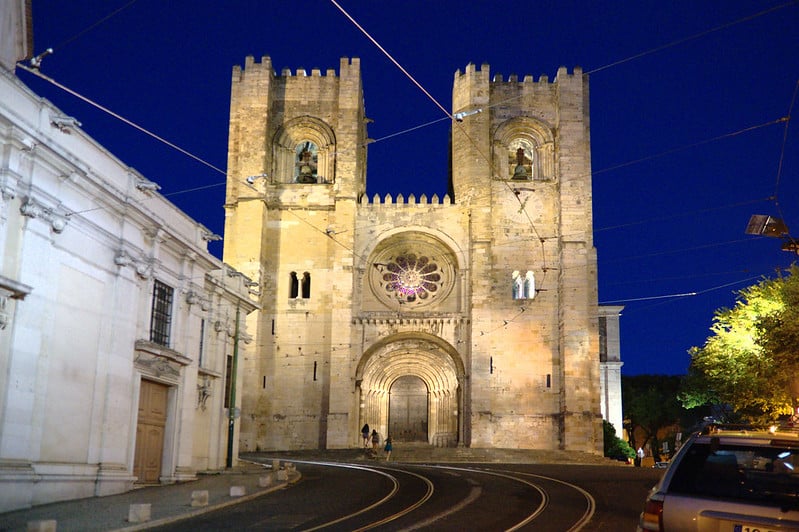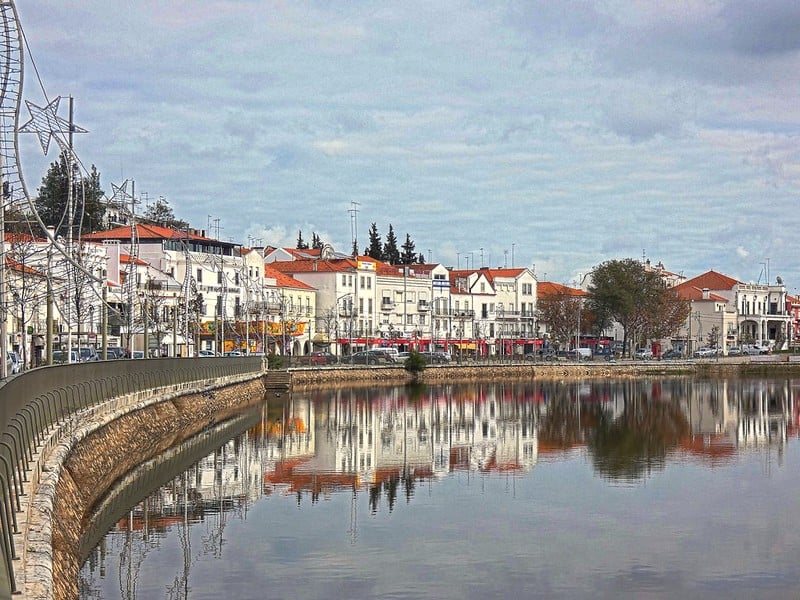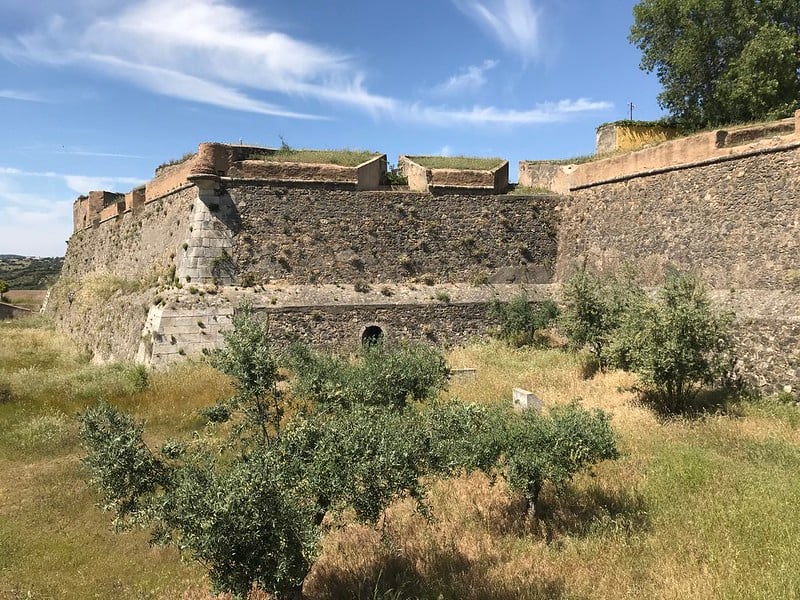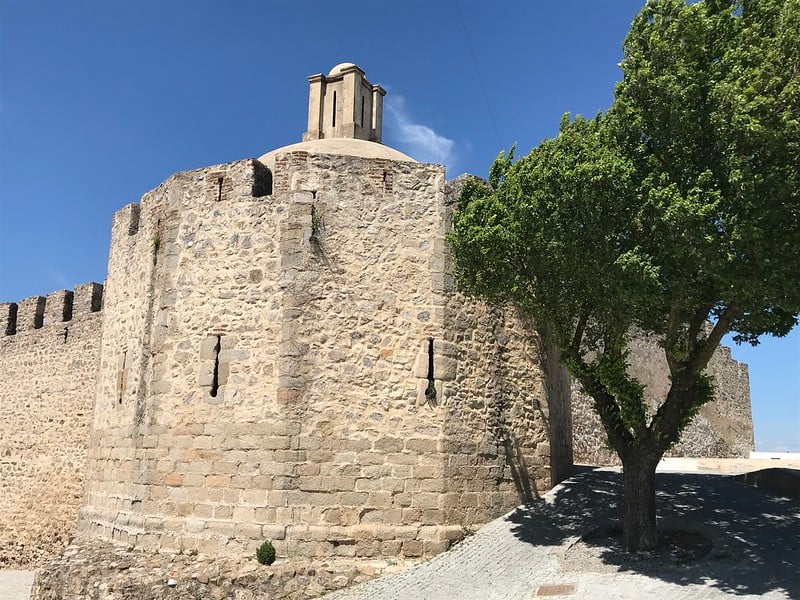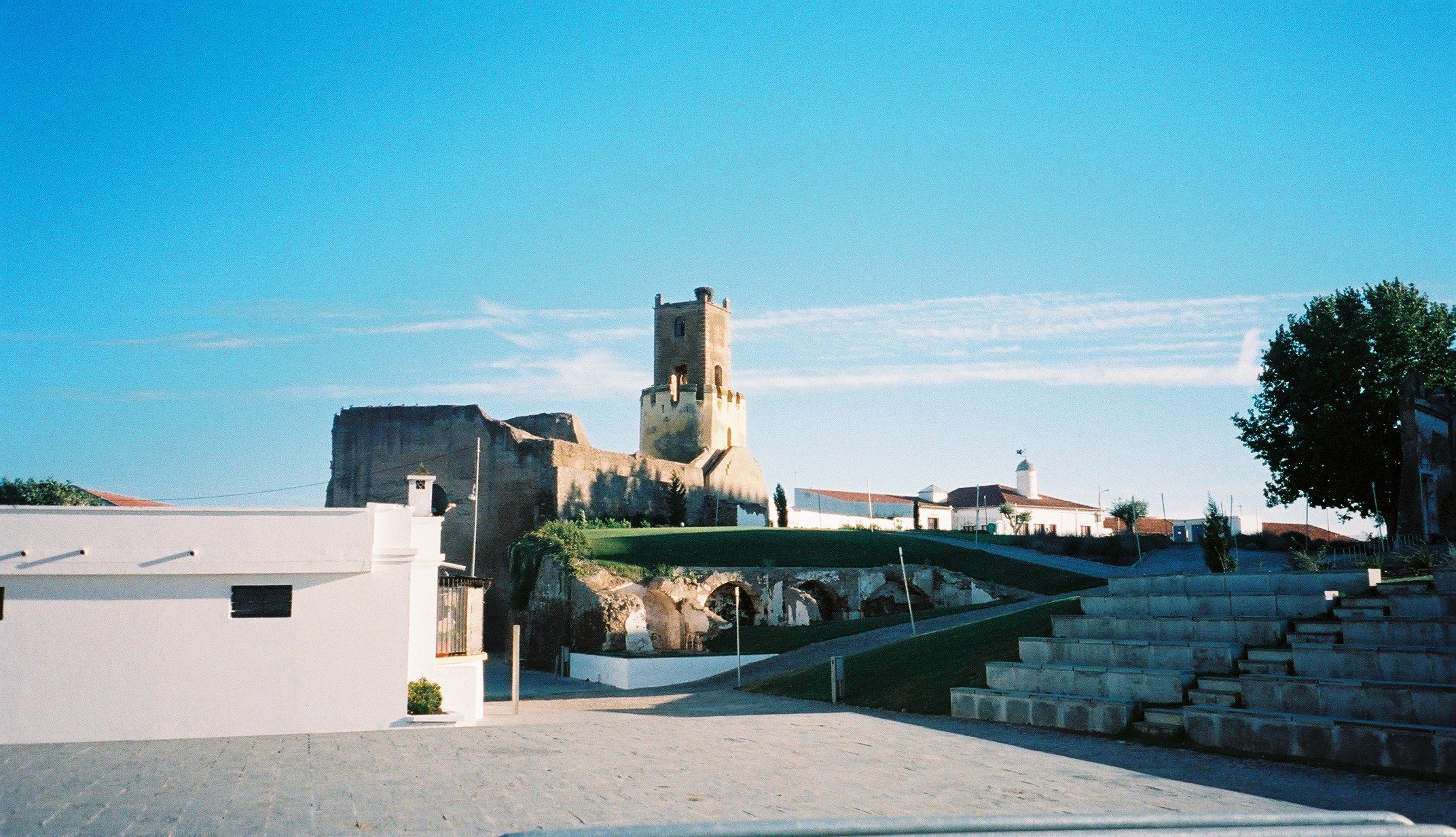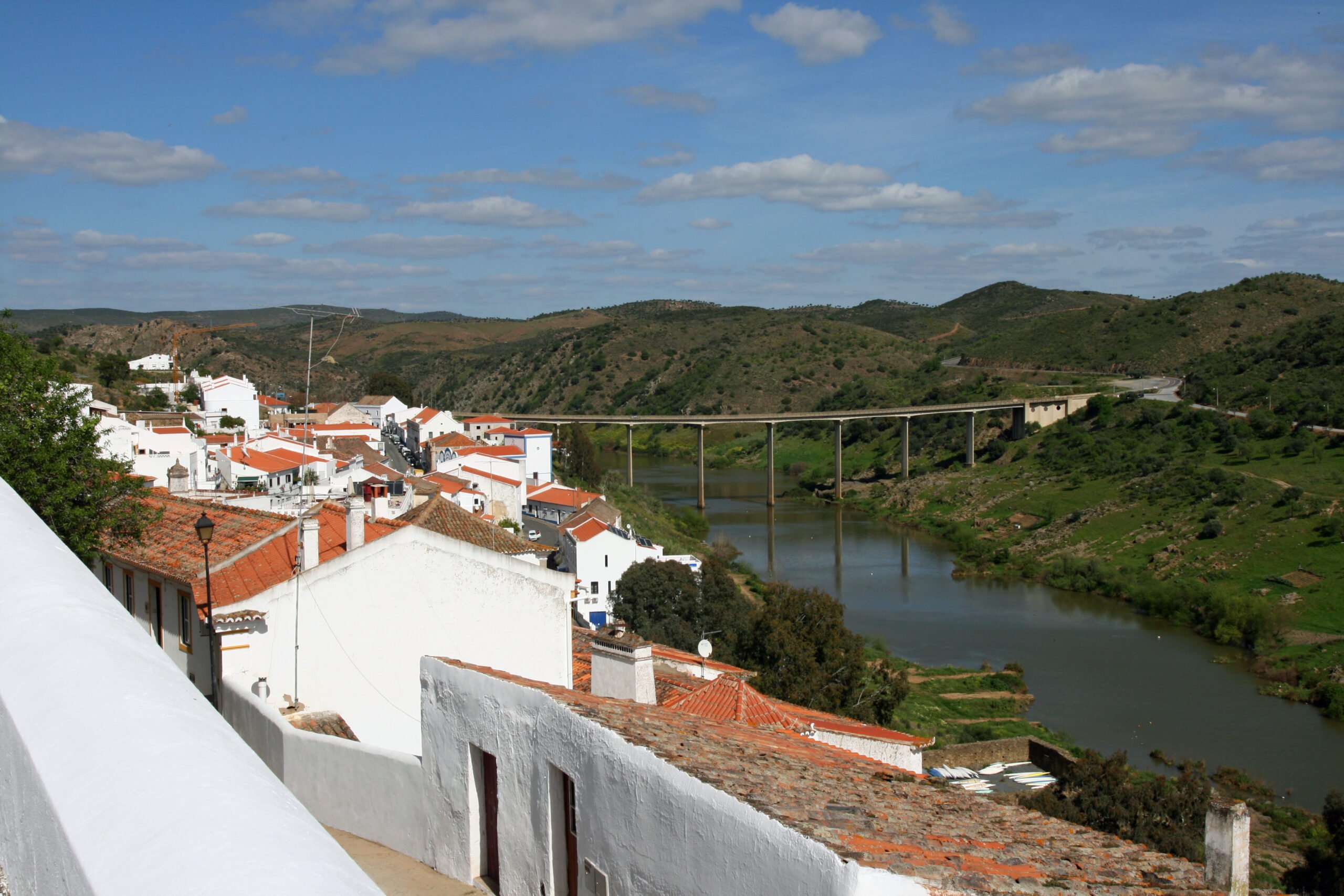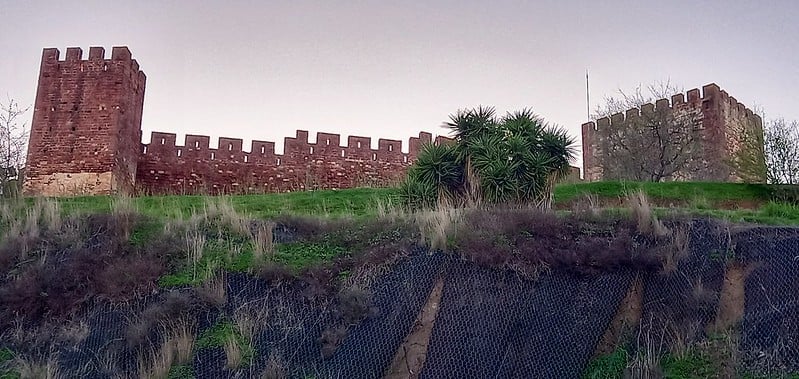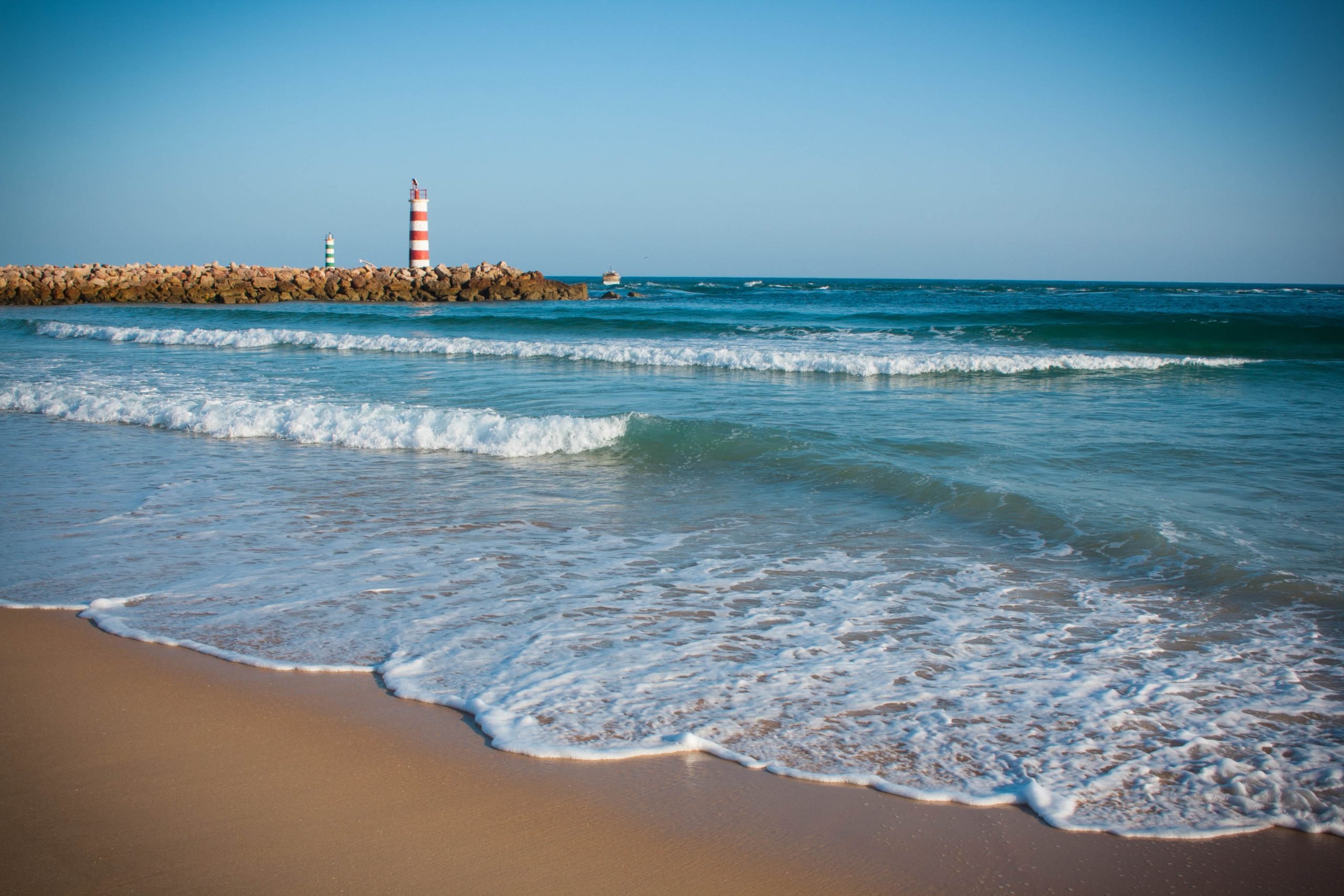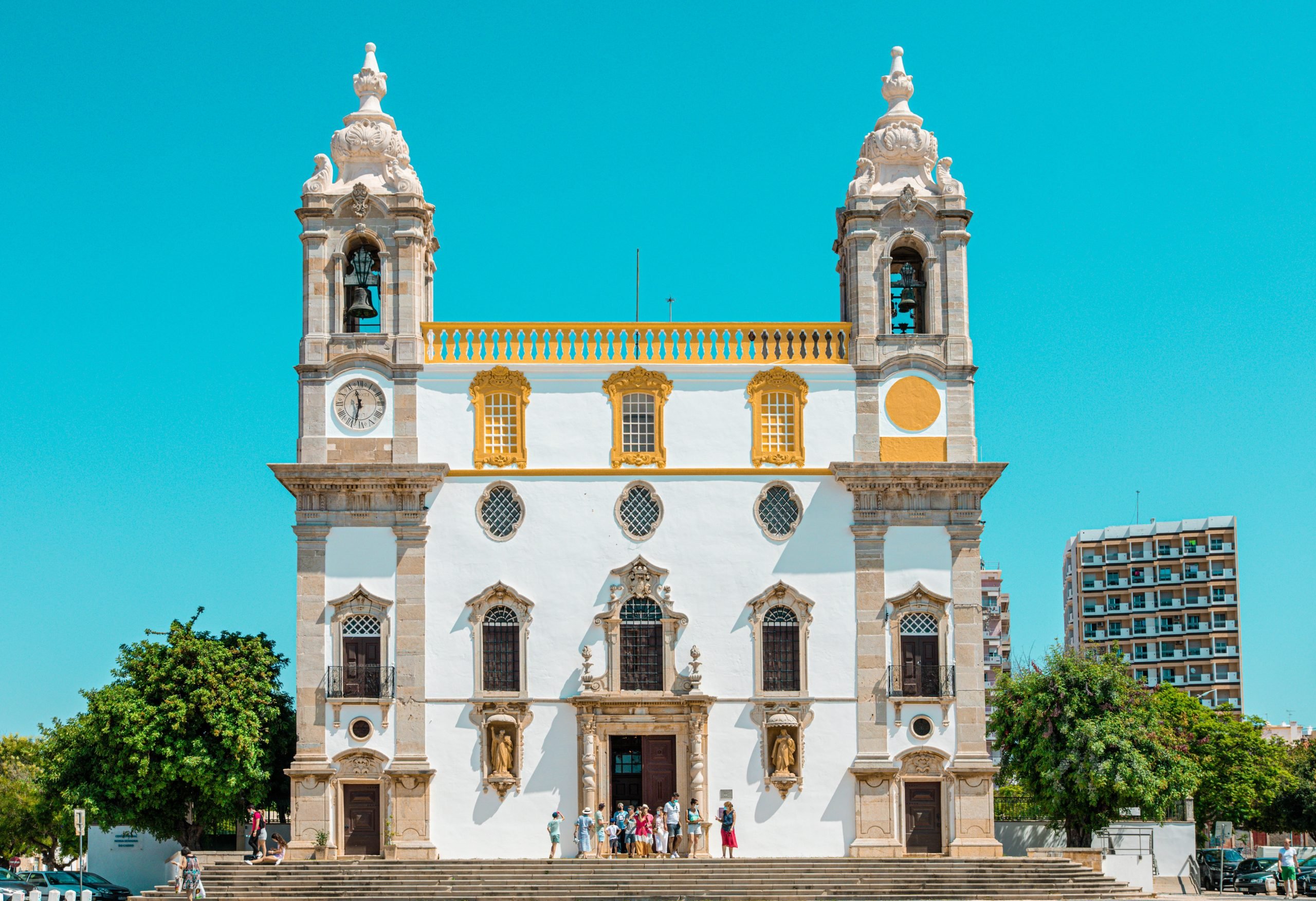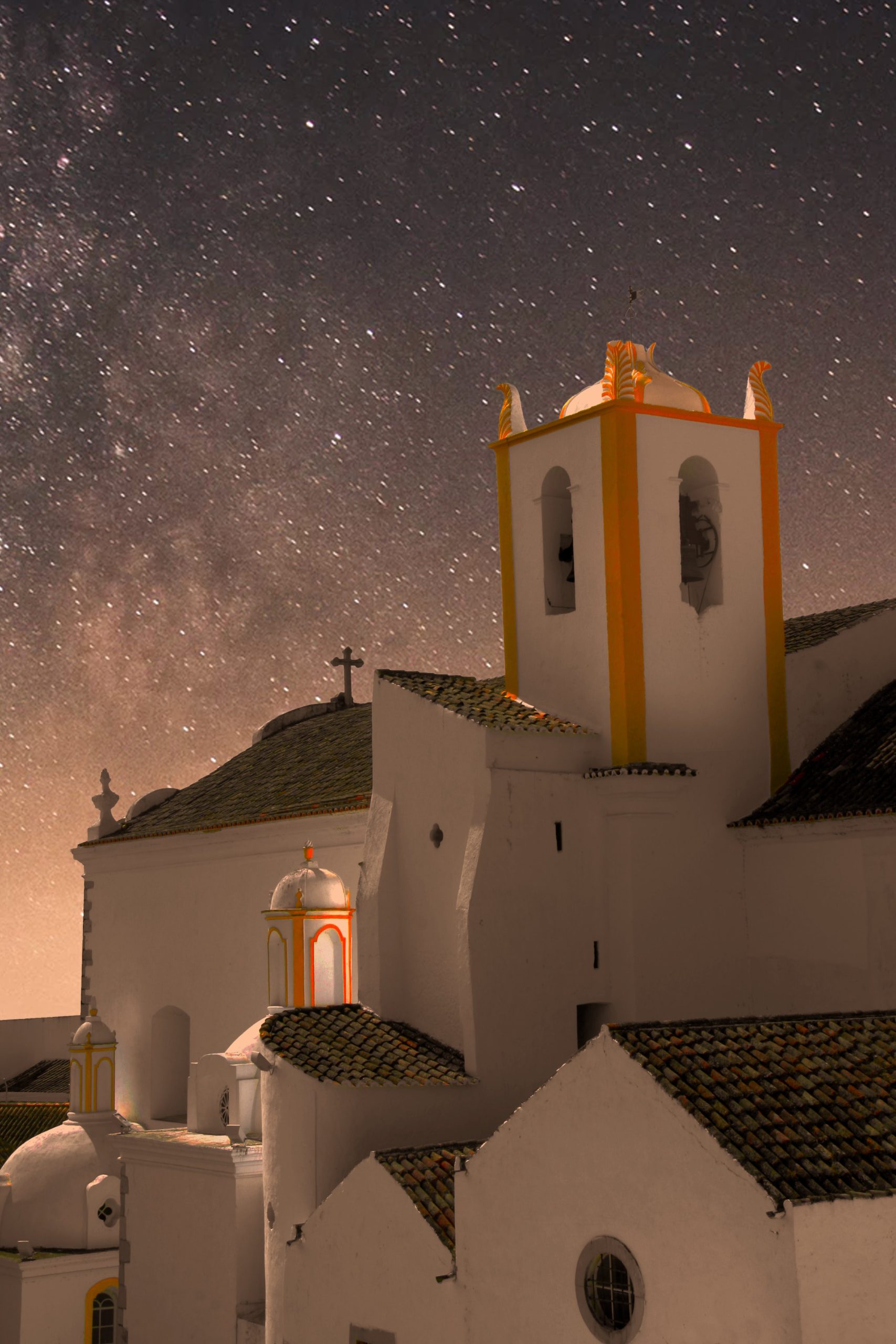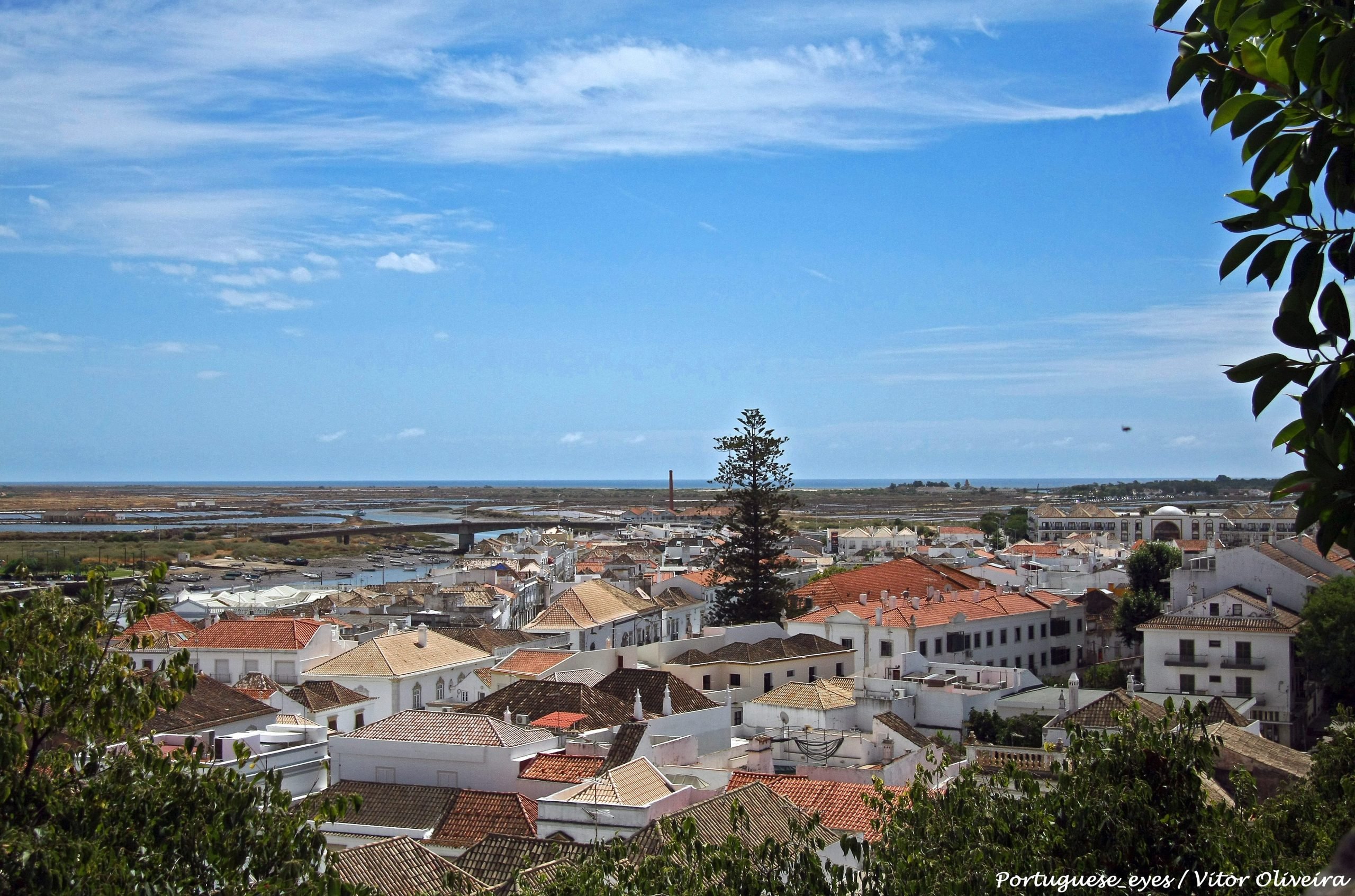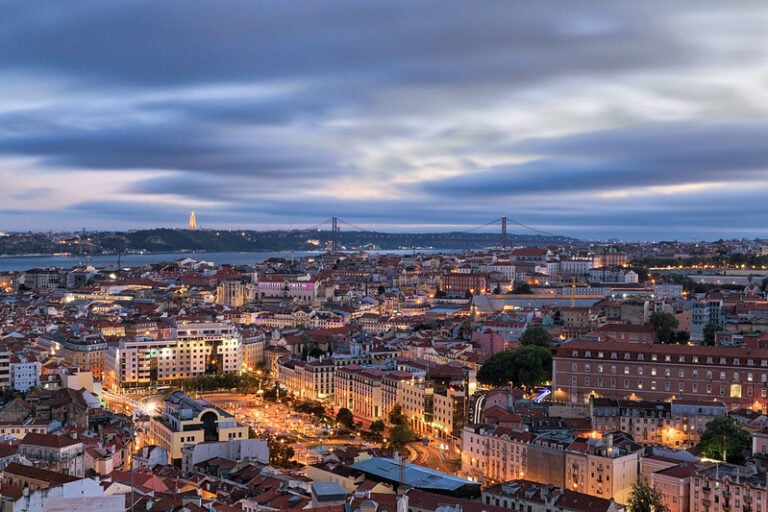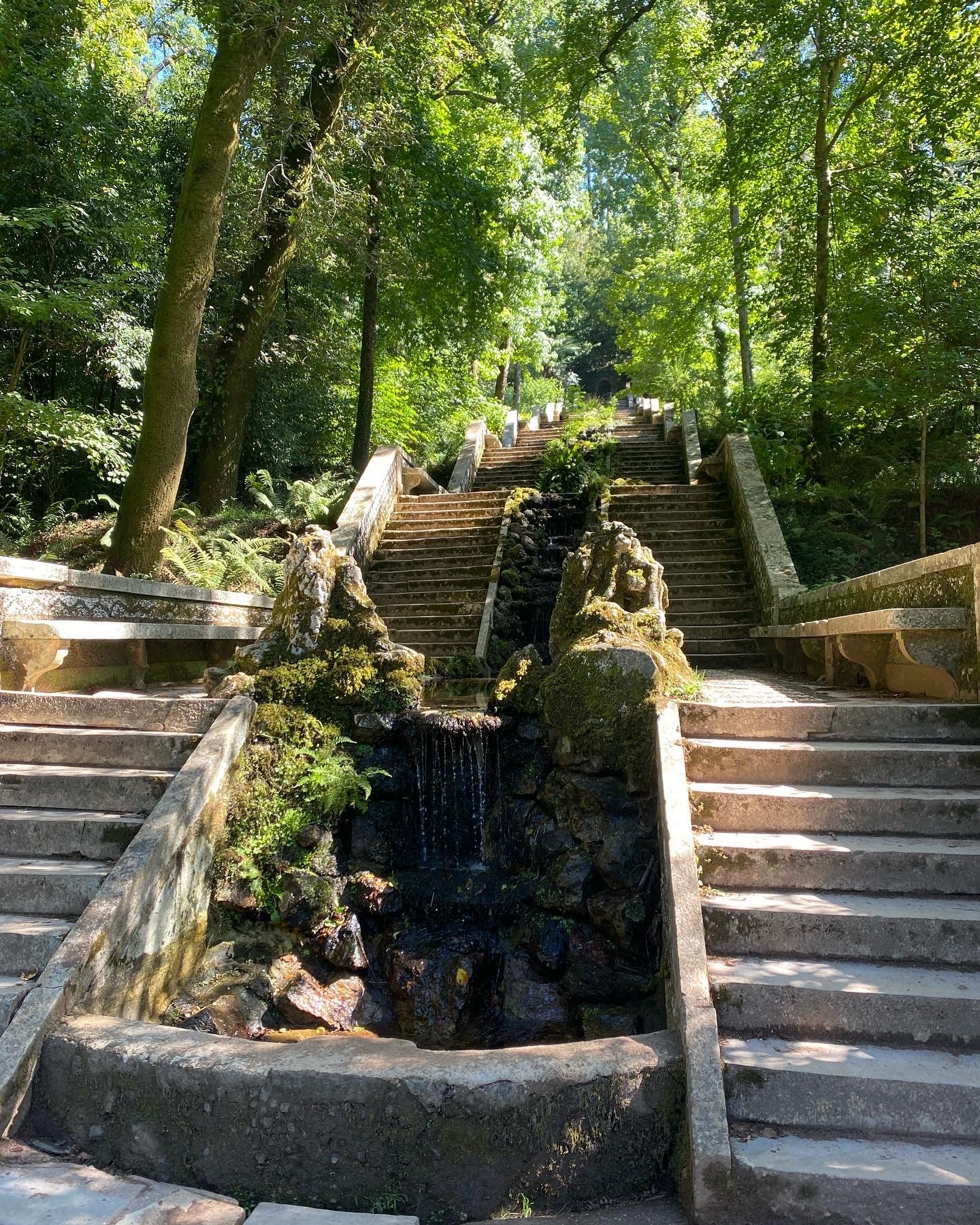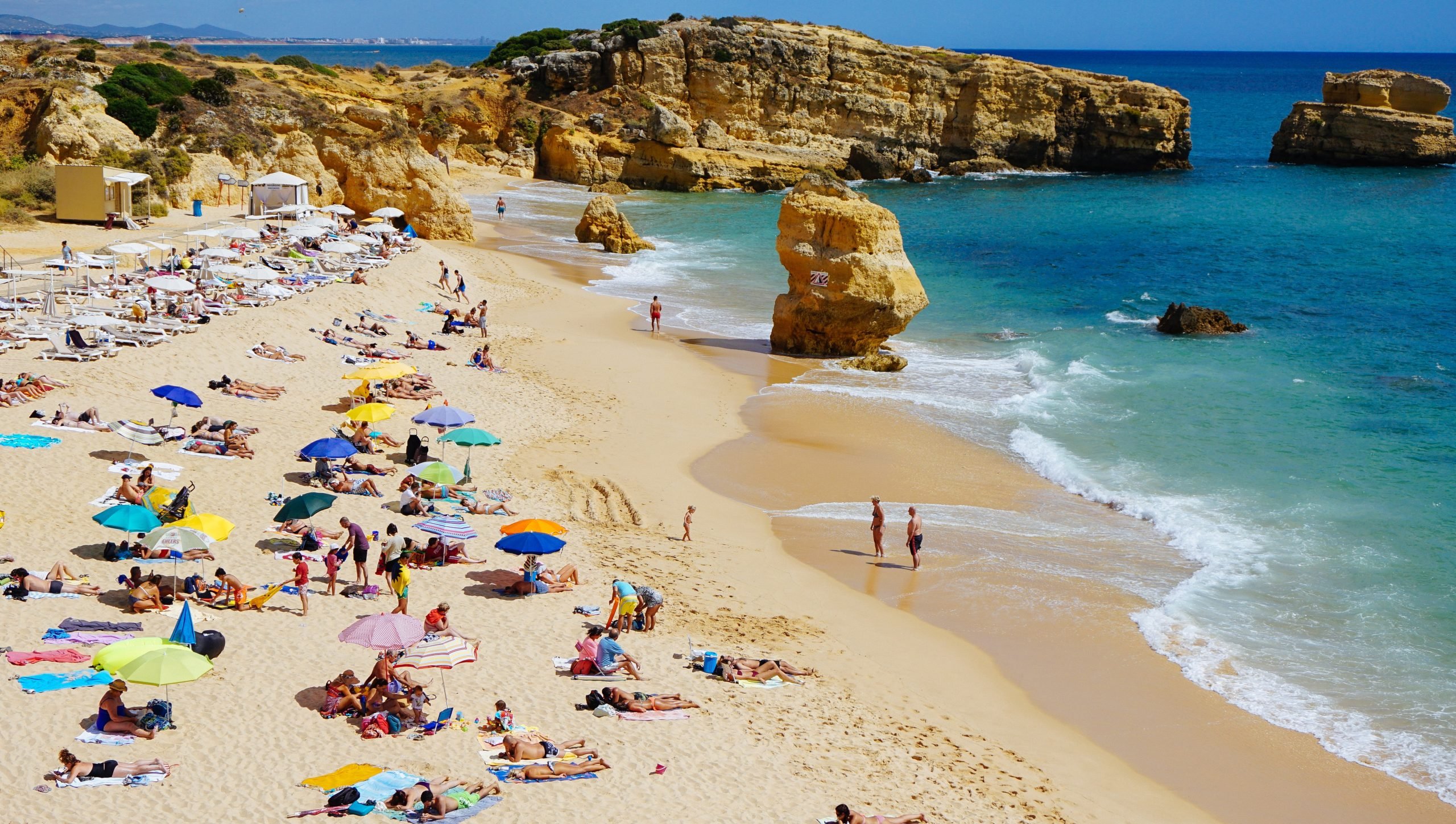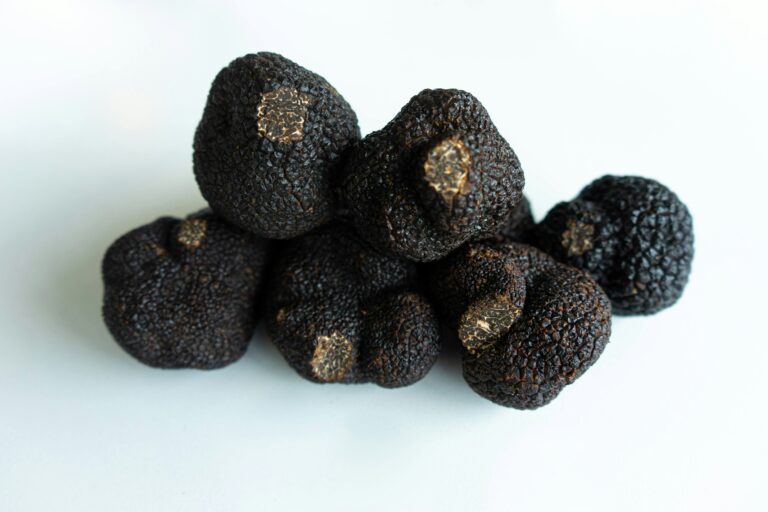The Roman conquest of the Iberian Peninsula seems like an epic, a story etched in blood and sweat, stretching back to the 3rd century BC, when the Roman legions first set foot on these rugged lands. This territory, destined to become Portugal, was part of Hispania, a vast and untamed expanse filled with tribes whose lives were intertwined with the hills and valleys they called home.
Roman Rule Begins
In those early days, the native tribes were unwilling to surrender to the newcomers. Fierce and proud, they rallied under the command of leaders like Viriathus, whose name became a beacon of resistance. Viriathus was a leader who turned the rocky landscape into his battlefield. He led his people in a guerrilla war, but the Romans were persistent. Their legions, disciplined and determined, marched relentlessly. By the end of the 1st century BC, Roman rule was firmly established, marking the beginning of a new era.
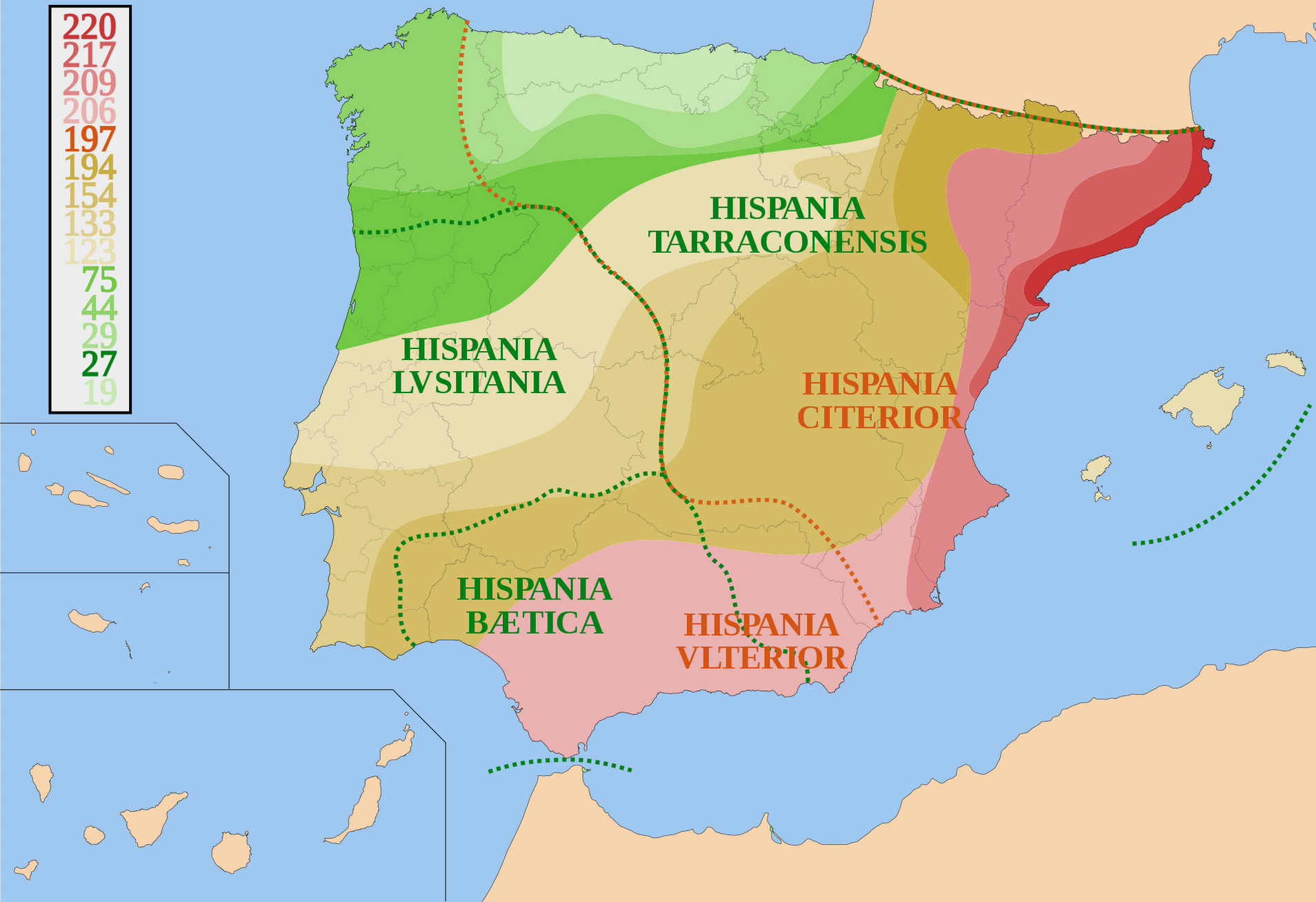
With Roman rule came transformation. The mishmash of tribes and territories was unified under Roman administration, a feat achieved through both cultural assimilation and military might. The Romans were masters of integration, blending their customs with those of the conquered to forge a cohesive society. They brought order, infrastructure and a way of life that would leave an indelible mark on the region.
Roman roads, the arteries of the empire, began to cross the land, straight and narrow, linking distant villages. The aqueducts, those marvels of engineering, snaked through the countryside, bringing vital water to the growing towns and cities. Bridges spanned rivers, their sturdy arches standing the test of time, facilitating trade and travel.
The Romans built infrastructure and communities. Cities sprang up, meticulously planned with all the characteristics of Roman civilization including forums, theaters, and temples. The Latin language infiltrated the local vernacular, Roman laws shaped governance and its customs permeated daily life.
Today, the remains of this Roman past are scattered throughout Portugal. These ruins offer you a window into the lives of those who traveled these lands centuries ago.
The Roman Conquest of Lusitania
The Roman conquest of Lusitania, the former name for the central and southern regions of present-day Portugal, was a remarkable period that began in the 2nd century B.C. This conquest was part of Rome’s wider ambition to dominate the Iberian Peninsula, a region known for its fierce indigenous tribes and its strategic importance.
The first Roman incursion into the Iberian Peninsula was motivated by the desire to subdue the Carthaginians during the Punic Wars. As Rome seized the eastern part of Hispania, its attention turned to the west, where Lusitania was located. The Lusitanians, a confederation of tribes known for their warrior culture and expertise in guerrilla warfare, proved to be formidable opponents.
One of the most notable figures of this period was Viriato, a Lusitanian leader who emerged around 147 BC. Viriato is often hailed as a national hero for his resistance against Roman forces. He led a successful guerrilla campaign, using the rugged terrain to his advantage and inflicting several defeats on the Roman legions. His leadership unified the Lusitanians and inspired widespread resistance. However, the Romans, determined and resourceful, eventually resorted to treachery, bribing Viriato’s own men to assassinate him in 139 BC. His death marked the decline of organized resistance, paving the way for Roman consolidation.

At the beginning of the 1st century BC, Lusitania was firmly under Roman control. The Romans began the process of Romanization, integrating the region into the vast Roman Empire. They created the province of Lusitania, with Emerita Augusta (now Mérida) as its capital. This city became the administrative heart of the province, incorporating Roman architectural and cultural ideals.
The administrative organization of Lusitania was sophisticated and hierarchical, designed to maintain control and facilitate governance. The province was governed by a legate appointed by Rome, supported by various officials responsible for taxation, justice and public works. The Roman legal system was introduced, providing a uniform framework that helped integrate the local population.
Romanization involved the establishment of Roman cities, the construction of infrastructure such as roads, bridges and aqueducts, and the spread of Roman culture and language. Cities like Olisipo (Lisbon) and Bracara Augusta (Braga) flourished under Roman rule, becoming bustling centers of commerce and culture. The construction of the Via de la Plata, an important Roman road, facilitated movement and trade, linking Lusitania to other parts of the Iberian Peninsula.
The Roman impact on Lusitania was profound. Over time, the local population adopted Roman customs, language and lifestyle. Roman citizenship was granted to the local elites, further integrating them into the empire. Temples, theaters, and baths were built, and the urban layout of the cities was distinctly Roman, with the forums serving as the focal points of public life.
Key figures during the Romanization of Lusitania include the emperors Augustus and Claudius, who both played significant roles in the development and stabilization of the province. Under their rule, Lusitania experienced significant urban development and economic prosperity.
Bracara Augusta
Bracara Augusta, known today as Braga, is one of Portugal’s oldest cities and a prominent example of Roman urbanism on the Iberian Peninsula. Founded by Emperor Augustus around 16 BC, Bracara Augusta quickly became prominent as the administrative center of the province of Gallaecia. Its foundation marked a deliberate effort by Rome to consolidate control over the territories of northwestern Hispania, ensuring the integration of these remote regions into the vast Roman Empire.
The choice of Bracara Augusta as the administrative center was strategic. Situated at the crossroads of important Roman roads, the city facilitated efficient governance, military supervision, and economic activities in the region. Bracara Augusta was designed according to the Roman grid pattern, with streets laid out systematically, intersecting at right angles to form a cohesive urban layout. This design included essential public buildings, residential areas and commercial spaces, reflecting the sophisticated planning that characterized Roman cities.
One of the most significant vestiges of Roman Bracara Augusta are the Roman baths. The design of the baths followed a standard Roman model, comprising several rooms with different temperatures, including the frigidarium (cold room), the tepidarium (hot room) and the caldarium (warm room).
The baths also had an intricate system of hypocausts, an ancient method of floor heating that ensured the rooms were kept warm. These baths exemplify the Roman emphasis on hygiene, leisure, and community life, playing a crucial role in the daily routines of the city’s inhabitants.
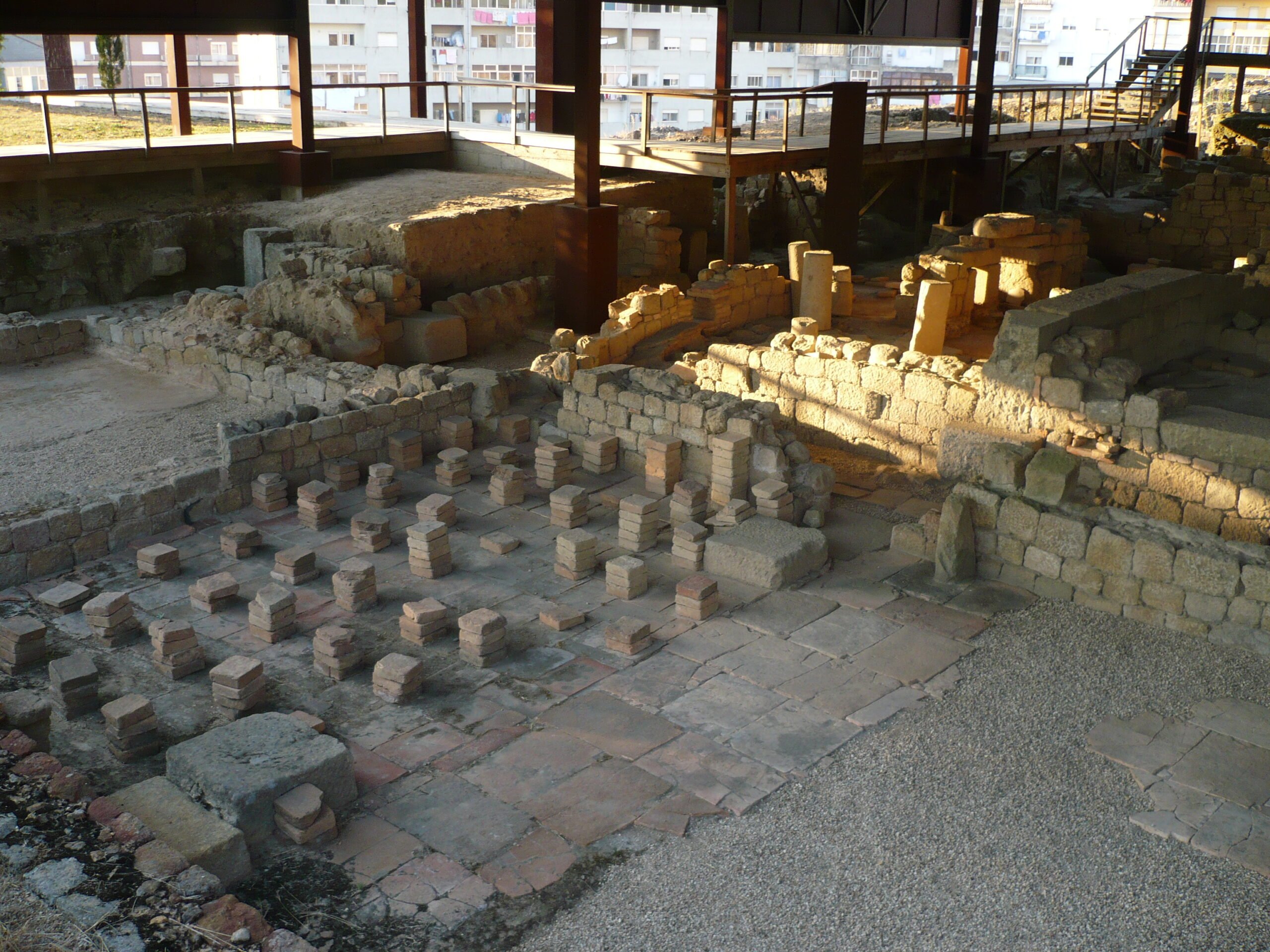
Another notable Roman structure in Bracara Augusta is the Roman Theater. Although only partially excavated, the remains of this theater provide valuable information about the cultural and social life of the city. The theater was a venue for a variety of performances, including plays, musical shows and orations, reflecting the Roman passion for entertainment and public discourse. The architectural design of the theater, with its semi-circular seating arrangement and impressive acoustics, demonstrates Roman advances in building techniques and their appreciation of the arts.
The Via Romana, part of the extensive network of Roman roads, is another significant feature of Bracara Augusta. These roads were crucial to maintaining the cohesion and efficiency of the Roman Empire, facilitating the movement of troops, trade goods, and information across vast distances. In Bracara Augusta, there are still traces of the Via Romana, which illustrate the city’s connection to other important Roman centers, such as Asturica Augusta (Astorga) and Lucus Augusti (Lugo). The road network boosted trade and economic development and played a fundamental role in the cultural and administrative integration of the region.
Conimbriga
Conimbriga, located in the center of Portugal, near what is now Condeixa-a-Velha, is one of the best preserved and most significant Roman sites on the Iberian Peninsula. Conimbriga’s history dates back to pre-Roman times, when it was a prosperous settlement of indigenous Lusitanians. However, it was under Roman rule, from the 1st century BC, that Conimbriga truly flourished.
The Romans recognized the strategic and economic potential of Conimbriga due to its location along the main road that connected Olisipo (present-day Lisbon) and Bracara Augusta (present-day Braga). This road was part of the extensive Roman network that facilitated military movements, trade and communication throughout the empire. By integrating Conimbriga into this network, the Romans ensured the city’s growth and importance as a provincial center.
Conimbriga’s urban development reflects typical Roman urbanism, with well-defined public spaces, residential areas, and infrastructures. The city’s prosperity led to the construction of numerous public buildings, private dwellings and essential facilities, making it a microcosm of Roman life in Lusitania.
One of Conimbriga’s most notable features is its impressive city walls and forum. The city walls, built at the end of the 3rd century AD, were a response to the growing threats from Germanic tribes. These sturdy fortifications, made of stone and designed to withstand sieges, enclosed the core of the city, protecting its inhabitants and key buildings. The forum, the heart of any Roman city, was the center of public life in Conimbriga. It served as a marketplace, a place for public speeches, and a center for social and political activities. The remains of the forum include columns, bases and fragments of statues, offering an insight into the grandeur and architectural sophistication of Roman public spaces.
Another highlight of Conimbriga is the Casa das Fontes, a luxurious Roman villa that exemplifies the opulence and artistry of Roman domestic architecture. This villa, one of the largest and most elaborate in Conimbriga, is known for its intricate mosaics and complex water features. The mosaics, which cover the floors of several rooms, depict geometric patterns, mythological scenes and floral designs, showing the skill of Roman craftsmen. The villa’s name, Casa das Fontes, derives from the numerous fountains and water channels that adorned its courtyards and gardens. These water features demonstrated the wealth and status of the owner. The villa’s design, with its spacious rooms, central courtyards and elaborate decorations, reflects the luxurious lifestyle enjoyed by the Roman elite.
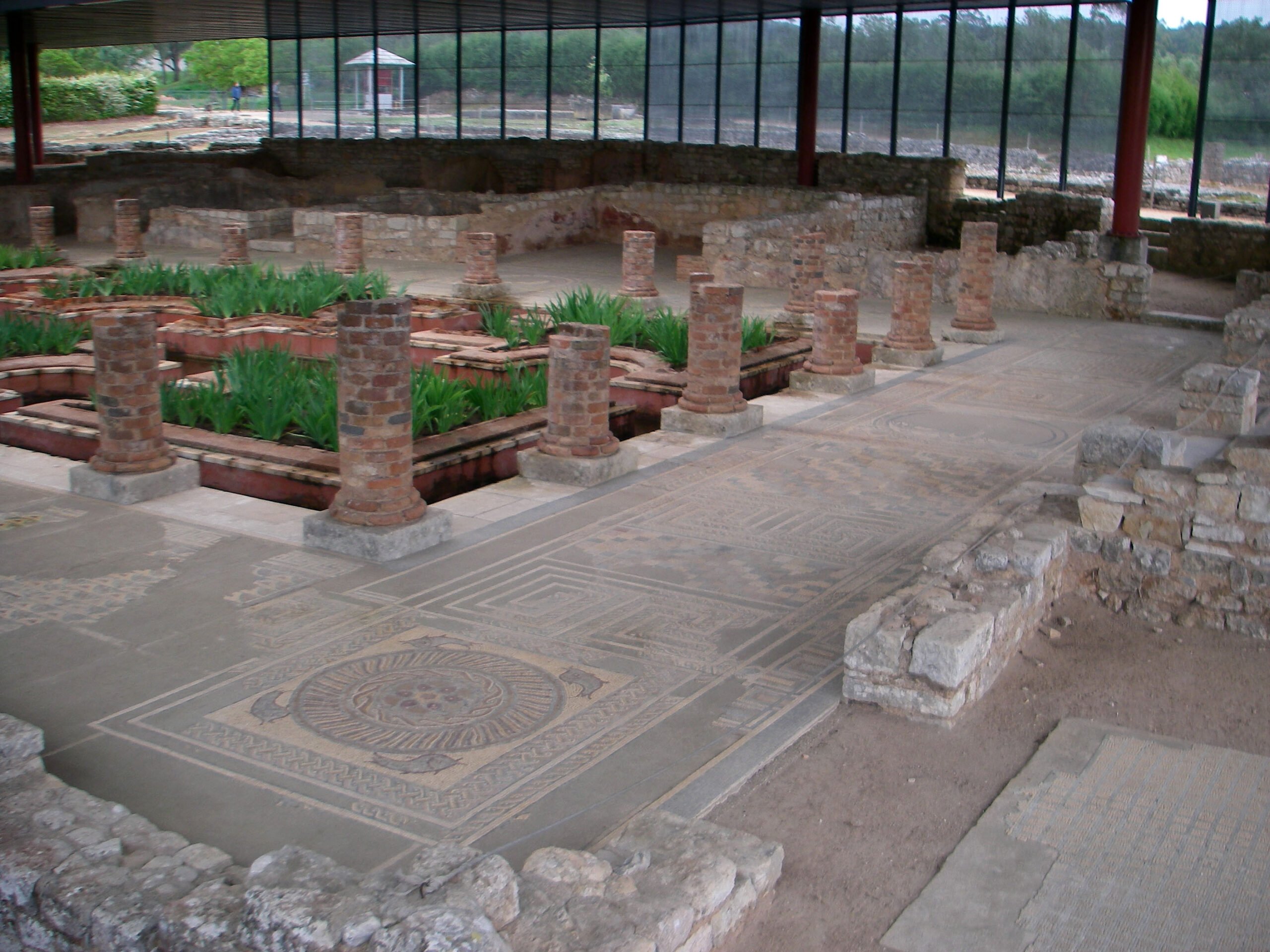
The Conimbriga aqueduct is yet another example of Roman engineering skills. Aqueducts were vital for supplying water to Roman cities, and Conimbriga was no exception. The Conimbriga aqueduct carried fresh water from distant sources to the city, ensuring a reliable supply for drinking, bathing, and irrigation. The presence of this aqueduct highlights the importance of water management in Roman urban planning. It enabled the construction of baths, fountains and other water-dependent structures, contributing to the general health and hygiene of the population.
The remains of Conimbriga provide a vivid portrait of Roman life and urban planning. The city walls and forum illustrate the Roman approach to security and public administration, while the House of Fountains offers a glimpse of the domestic luxury enjoyed by the well-to-do. The aqueduct underlines the sophistication of Roman engineering and its fundamental role in maintaining urban life.
Eburobrittium
Eburobrittium, located near the picturesque town of Óbidos in central Portugal, was an important Roman settlement that played an essential role in the economic and social life of the region. Situated on top of a strategic hill, this settlement took advantage of its advantageous position to prosper as a center for trade and agriculture during Roman times. The establishment of Eburobrittium is indicative of the Roman strategy of fortifying and developing key sites that could support both economic activities and military logistics.
Eburobrittium’s prosperity was largely due to its fertile surroundings, which were ideal for agriculture, particularly for growing olives and grapes. These products, along with other agricultural goods, were probably traded on a large scale, contributing to the economic vitality of the settlement. Eburobrittium’s location also facilitated the trade routes that connected it to other parts of Lusitania and beyond, ensuring a constant flow of goods and cultural exchange.
One of the most significant Roman ruins at Eburobrittium are the Roman baths, an integral part of daily life in any Roman city. The baths of Eburobrittium were well built, featuring the classic layout of caldarium (hot bath), tepidarium (hot bath) and frigidarium (cold bath). The presence of such elaborate baths indicates a high standard of living and the importance the Romans attached to public facilities.
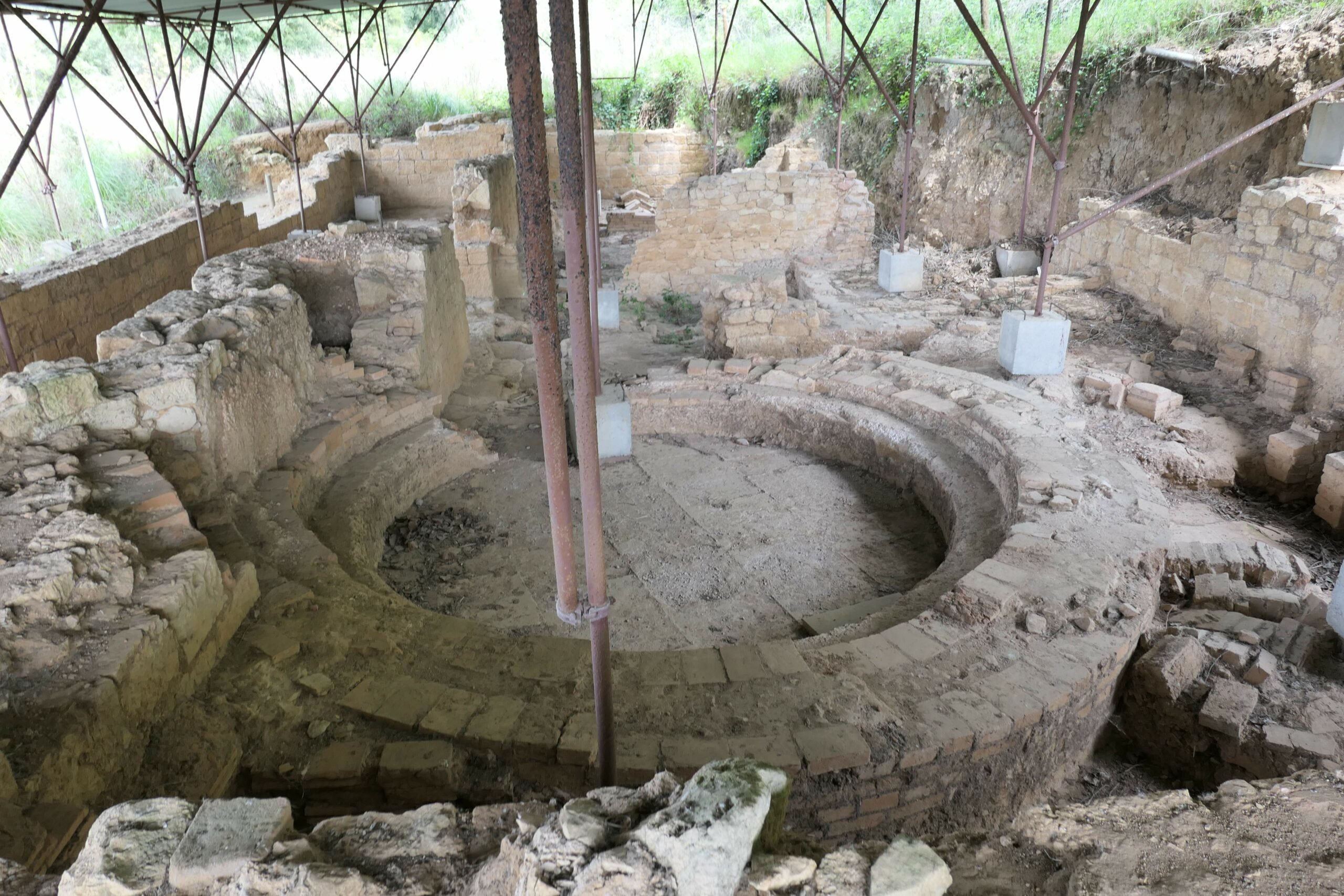
Archaeological excavations have revealed the sophisticated engineering behind these baths, including the hypocaust system used to heat the floor and walls. The remains of these baths, including sections of mosaic flooring and fragments of decorative elements, provide insight into the architectural and cultural sophistication of the Roman inhabitants of Eburobrittium.
The discovery of the forum and temple of Eburobrittium provides valuable information about the civic organization and religious life of the settlement. These structures highlight the Romans’ emphasis on creating cohesive urban centers that facilitated both administrative efficiency and community involvement. The architectural remains, such as columns, altars, and inscriptions, offer glimpses into the artistic and cultural milieu of the time.
Another notable feature of Eburobrittium is its ancient necropolis, which sheds light on Roman burial practices and beliefs about death and the afterlife. The necropolis, located on the outskirts of the town, contains a variety of tombs and funerary objects that illustrate the customs surrounding death and burial in Roman Lusitania. Archaeological finds from the necropolis include funerary urns, inscriptions, and personal artifacts buried with the deceased.
Olisipo
Olisipo, today known as Lisbon, is a city with a deep and rich history that extends far beyond its most recent maritime explorations. During Roman rule, Olisipo had significant strategic importance due to its privileged location on the Tagus River estuary, providing a crucial link between the Atlantic Ocean and the interior of the Iberian Peninsula. This made Olisipo a vital port and commercial center in the Roman Empire, facilitating trade, military logistics and cultural exchanges.
The beginnings of Olisipo’s history as a Roman city began in earnest towards the end of the 2nd century BC, when Rome established its rule over the region. The Romans recognized the strategic value of Olisipo’s natural port and its proximity to the main sea routes. As a result, they invested heavily in its development, integrating the city into the wider network of Roman urban centers. Olisipo became a municipium, granting its inhabitants Roman citizenship and allowing the city to govern itself, while adhering to Roman laws and customs.
One of the most significant Roman sites in Olisipo is the Roman Theater. Discovered in the 1960s during urban regeneration, the theater dates back to the time of Emperor Augustus, at the beginning of the 1st century AD. The excavation of the theater revealed a semi-circular structure built into a hillside, typical of Roman theaters, designed to optimize acoustics and visibility. The theater could seat several thousand spectators, reflecting the importance of public entertainment in Roman culture. The remains include the seating levels, the orchestra area and parts of the stage, providing valuable information on the architectural and social aspects of Roman life in Olisipo.
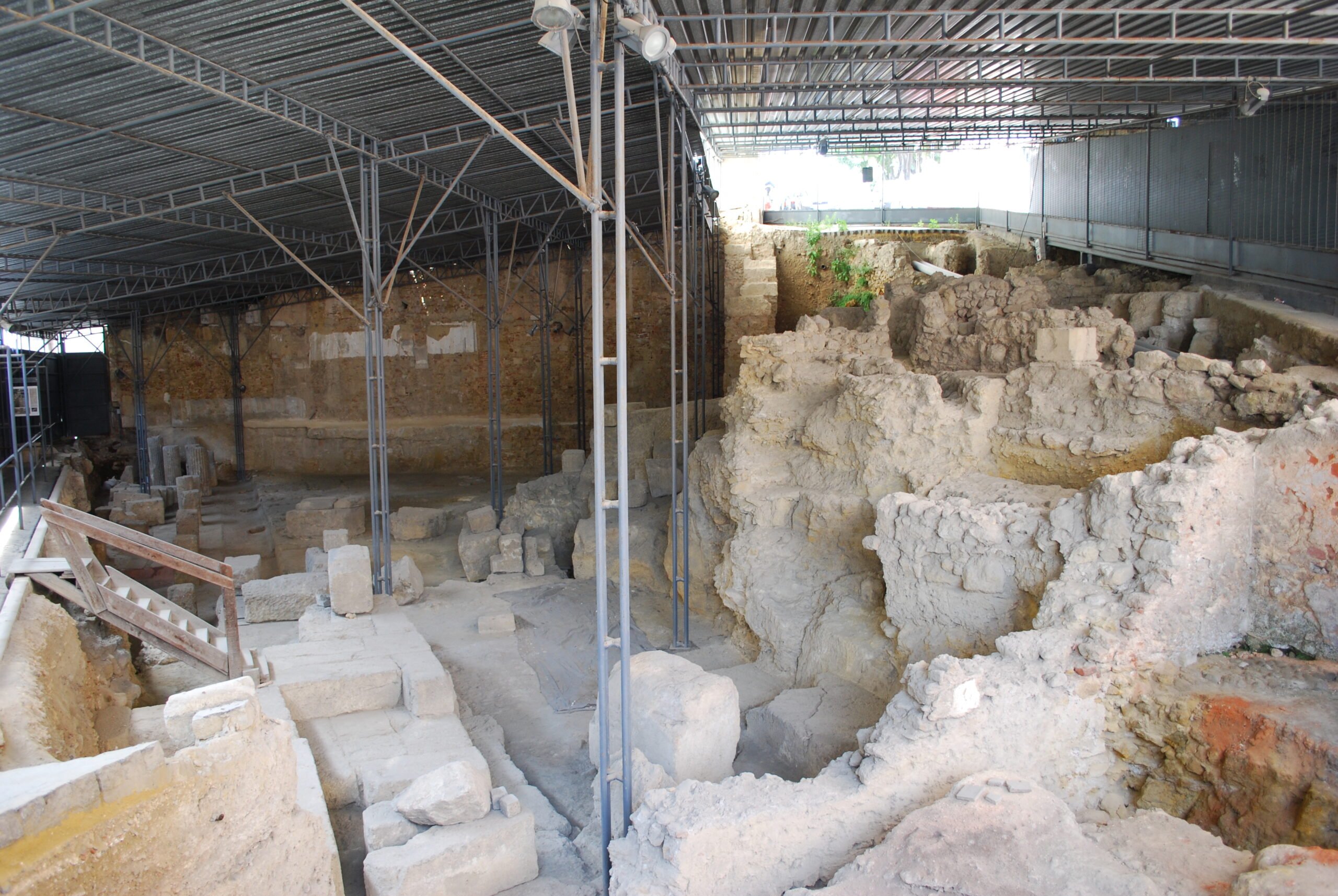
Another important site is the Roman Forum of Olisipo, located near what is now Rua da Prata, in downtown Lisbon. Excavations have uncovered traces of the forum’s floor, foundations of public buildings and parts of monumental columns. These findings suggest that the forum was a grandiose space, reflecting the prosperity and importance of Olisipo in the Roman Empire. It probably housed temples, administrative buildings and markets, where citizens engaged in commerce, court proceedings and civic ceremonies.
The Roman wall and fortifications of Olisipo also played a crucial defensive role, protecting the city from potential invasions and ensuring the safety of its inhabitants. These fortifications were part of a wider network of defenses that the Romans built throughout their empire. In Olisipo, the city wall was a formidable structure, built with large blocks of stone and incorporating towers and gates at strategic points. Parts of this wall are still visible today, particularly in the Alfama district, providing a tangible link to the city’s ancient past. The defensive capabilities of the wall were crucial during periods of instability and conflict, offering protection against sea and land threats.
Mirobriga
In the sunny plains of the Alentejo lies Mirobriga, a testimony to the lasting legacy of Roman civilization in Portugal. Located near the modern city of Santiago do Cacém, Mirobriga emerged as a thriving urban center during the Roman era.
The story of Mirobriga begins with evidence of human habitation dating back to prehistoric times. However, it wasn’t until the Roman conquest of the Iberian Peninsula that Mirobriga truly became known. Under Roman rule, the town flourished as an important administrative, commercial and military center, strategically located along the ancient trade routes linking the Mediterranean to the Atlantic.
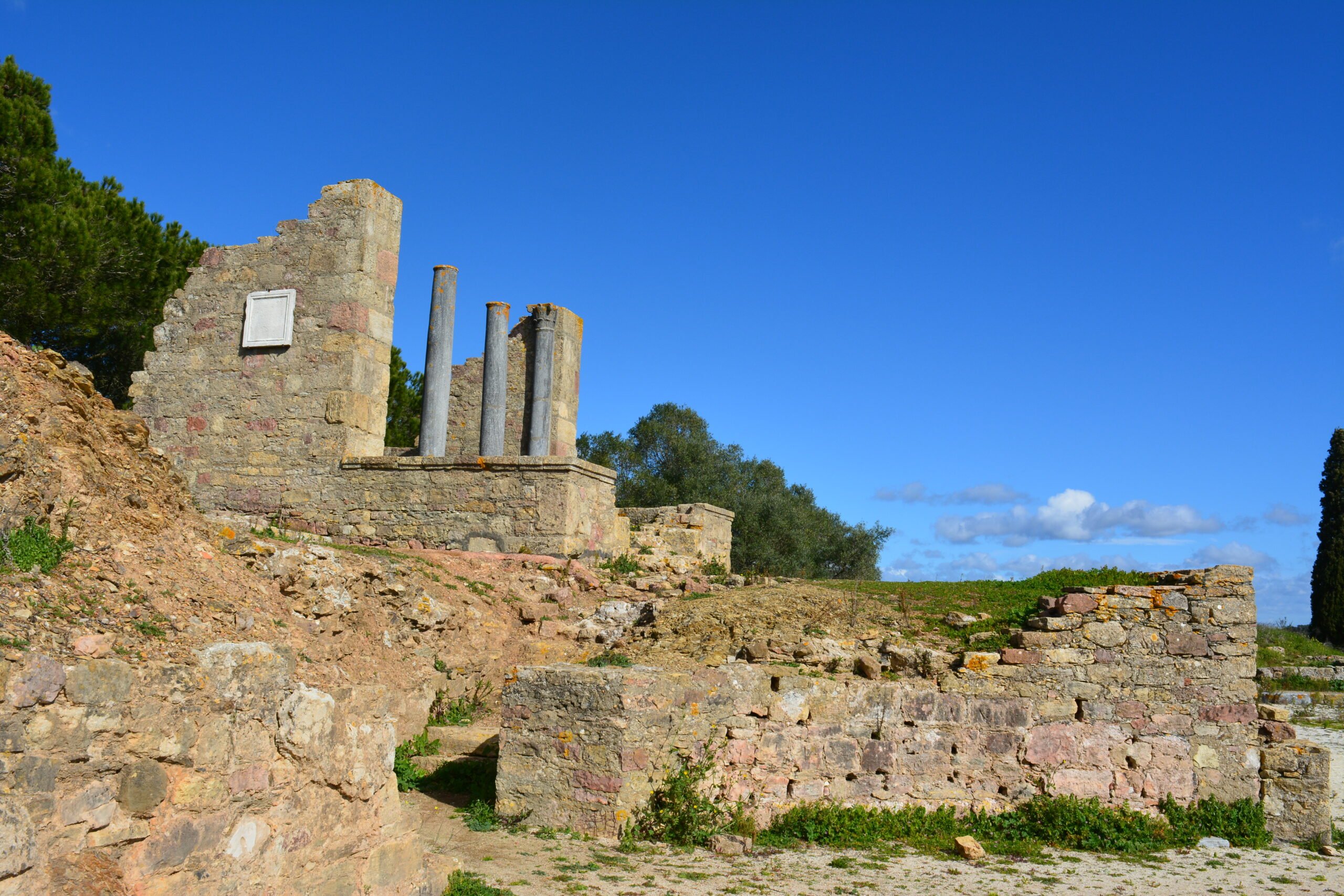
The city’s strategic location also made it a crucial military post, guarding the border between the Roman Empire and the indigenous tribes of Lusitania. Its defensive walls, fortified gates, and watchtowers saw centuries of conflict and conquest.
Mirobriga also had a thriving urban center with a rich cultural heritage. Its residential quarters, adorned with mosaic floors and frescoed walls, offered a glimpse into the daily life of Roman citizens, where families gathered to dine, chat and celebrate in the comfort of home.
Ammaia
Located in the picturesque Alentejo region, near the town of Marvão, is the ancient Roman city of Ammaia. Founded in the 1st century AD, Ammaia played a significant role in the Romanization of the Iberian Peninsula, fitting perfectly into the wider framework of the Roman Empire. The city prospered as a commercial and administrative center, taking advantage of its strategic location along important trade routes to promote economic growth and cultural exchange.
Ammaia’s integration into the Roman Empire was marked by rapid urban development and the construction of infrastructures characteristic of Roman urban planning. The city was built according to the traditional Roman grid pattern, with a clear emphasis on public facilities and monumental architecture.
One of the most striking vestiges of Ammaia are its gates and defensive walls. These structures were essential for the security of the city, protecting it from possible invasions and guaranteeing the safety of its inhabitants. The city gates, built with large blocks of stone and with impressive arches, served as the main entry points to Ammaia. As well as being functional, they were also symbolic, representing the strength and stability of Roman authority. The defensive walls, built with the same robustness, surrounded the city, creating a formidable barrier against external threats. These fortifications show Ammaia’s strategic importance in the Roman Empire’s regional defense network.
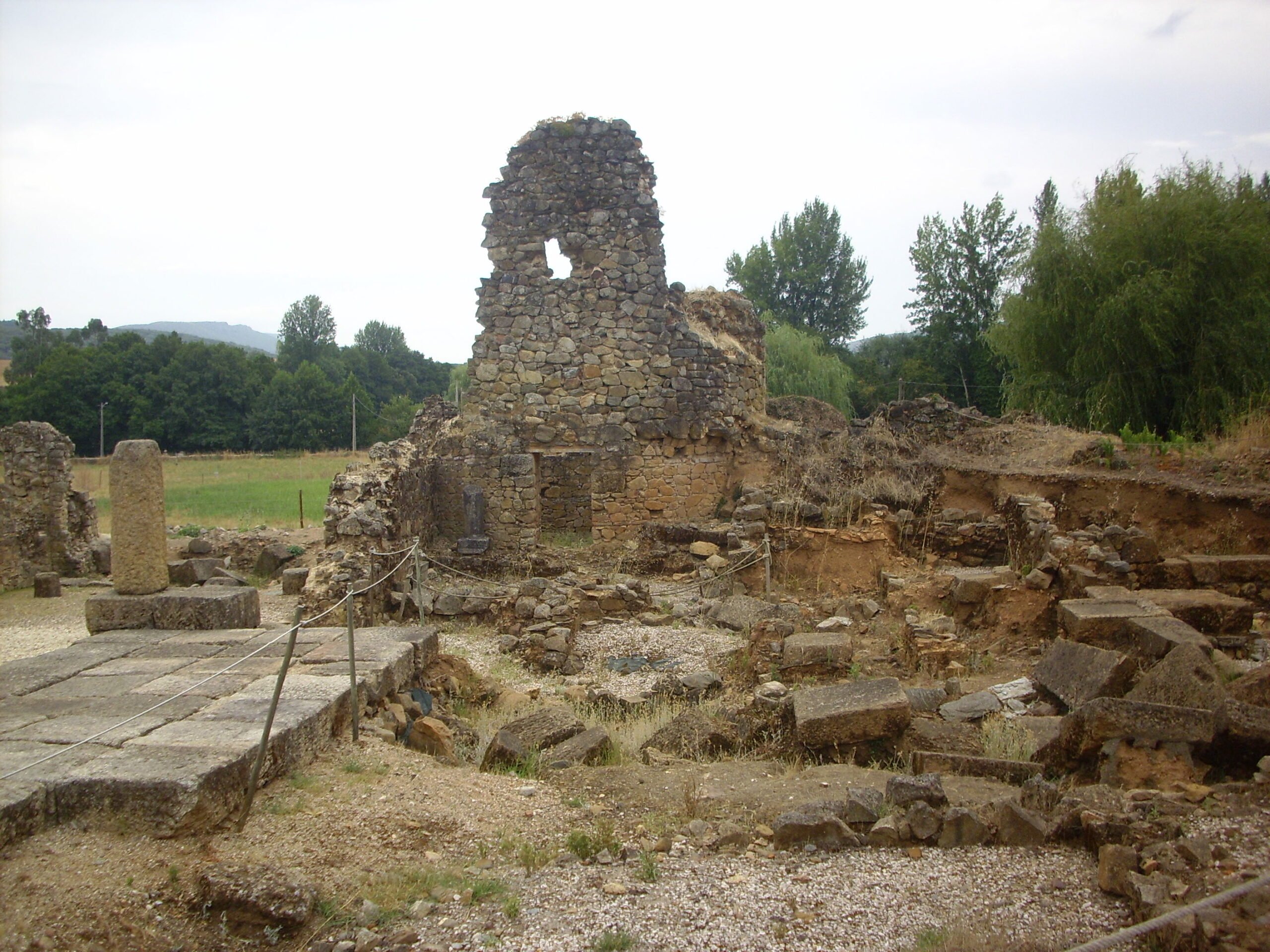
The forum of Ammaia, the epicenter of public life, shows the city’s role as an administrative and social center. The public buildings around the forum included basilicas, which were used for administrative and judicial purposes, and temples dedicated to Roman deities, underlining the integration of religious and civic life. The presence of these structures indicates that Ammaia hosted a vibrant community with diverse social, economic, and religious activities.
Today, the ruins of Ammaia offer a fascinating glimpse into the Roman past, attracting archaeologists, historians and tourists. The well-preserved remains of the city, including the city gates, the forum, and the thermal baths, demonstrate the sophistication and lasting legacy of Roman urban planning and architecture. Ongoing excavations and preservation efforts continue to reveal new aspects of Ammaia’s history.
Balsa
Tucked away near the modern day city of Tavira in the Algarve lies the story of Balsa. During ancient times, you would find a tapestry of dwellings, from humble villas to opulent villas adorned with colorful mosaics and intricate frescoes. Each one was a window into the daily life and aspirations of Roman citizens.
Evidence of both the necropolis and the forum also remain in this once thriving city near the sea. In addition, archaeologists have unearthed ancient fish processing factories used in the 1st and 2nd centuries AD to make fish sauces and pastes. Well-preserved stone structures have also been uncovered from this mythical Roman city.
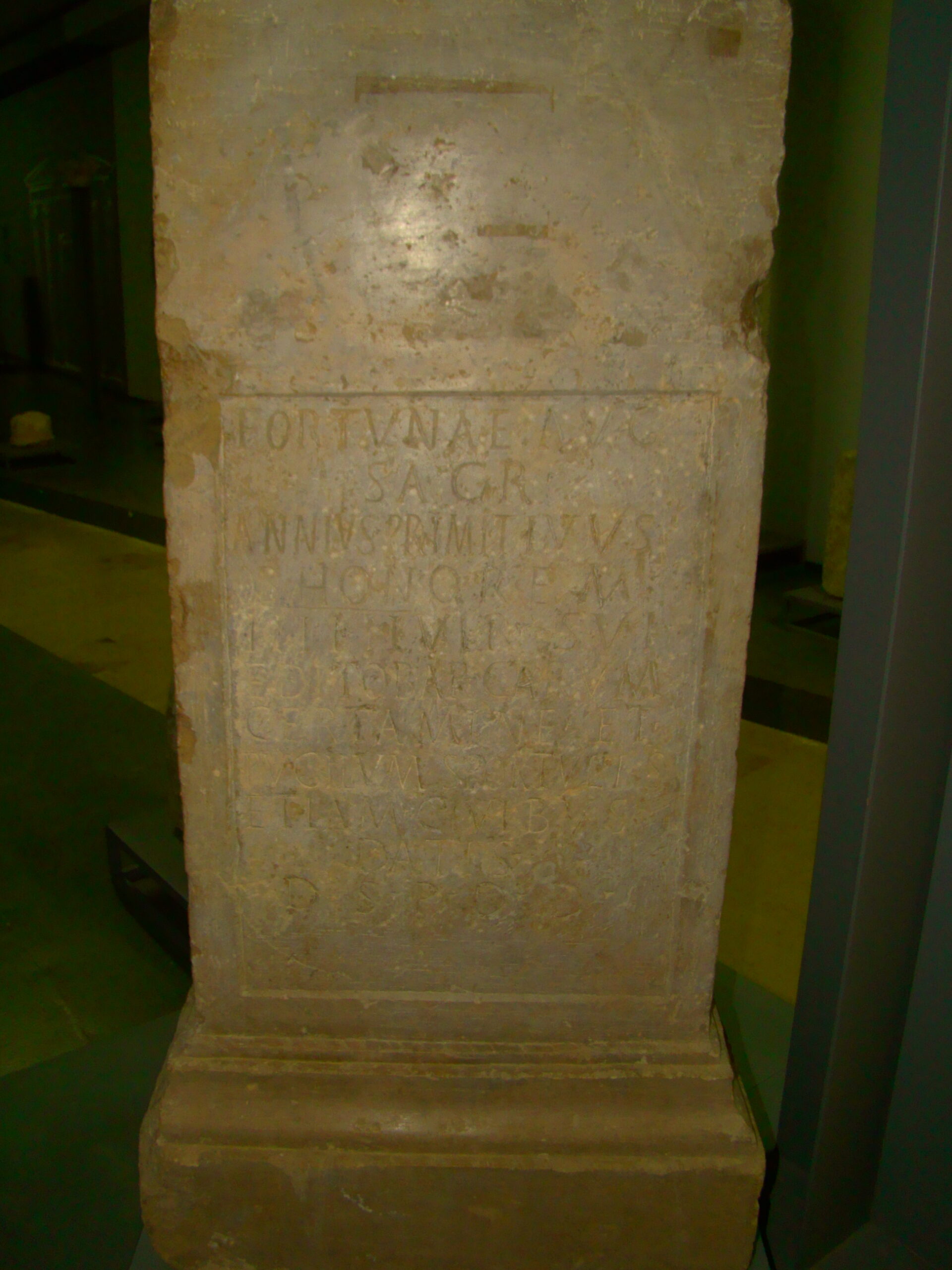
Final Thoughts
As we come to the end of our journey through the Roman conquest of Portugal, it’s as if we’re saying goodbye to old friends made of stone and history. These ruins, worn down by time but still standing firm, hold stories of a time when empires clashed in the hills and valleys of Lusitania. In the whispers of ancient footsteps, we find not only history, but also the essence of our shared humanity.

